Namibia, more than just sand
Flying into Windhoek, Namibia, you're greeted with a window view of the most stunning sweeping sand dunes as far as the eye can see, with hardly a cloud in sight. The experience hardly stops there, as you're also met with some turbulent winds amounting to one of the stressful landings I've ever experienced.
Namibia is not so much a destination but a beautiful mystery, known mainly for its namesake, the Namib desert. The name 'namib' is derived from the Nama language, implying “an area where there is nothing.” Ironically, it is in nothing that the most wonderous something can be found. This is where my journey began, on an eleven person group tour with Chameleon Safaris in Windhoek, that would span 7 days and 2,500 kilometers across the country.
Day zero, the arrival
After getting to my hostel, Chameleon Backpackers (also run by the safari company), I realized that aside from the famous photos and videos of the sweeping sand dunes that I actually knew next to nothing about the former Imperial German colony, once known as German South West Africa.
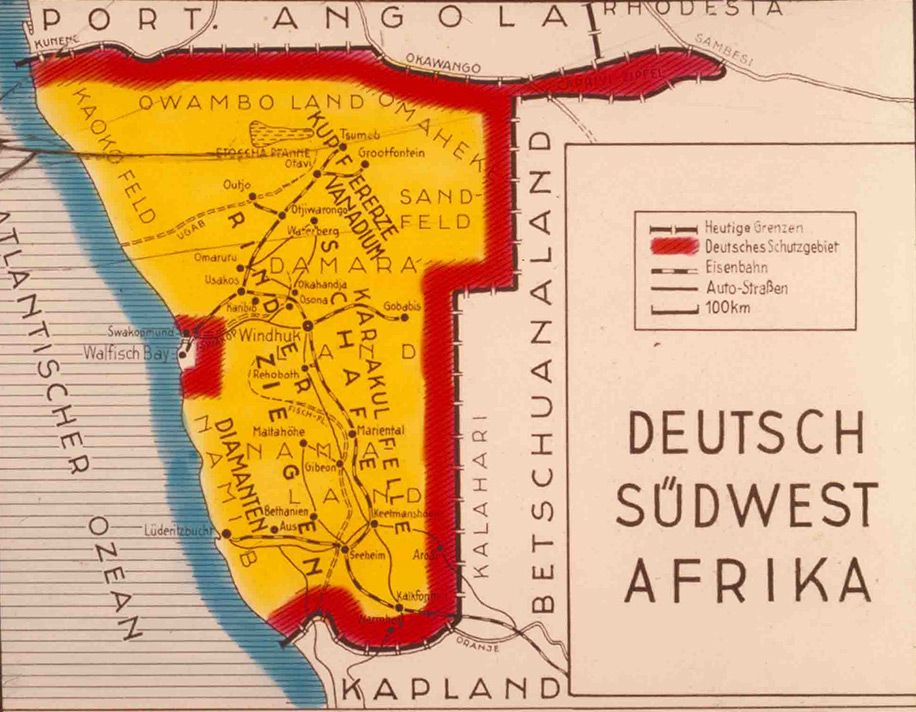
I was surprised, then, to learn North Korea would be the gateway to learning Namibia's history in person. The Independence Memorial Museum, a museum dedicated to the anti-colonial resistance and national liberation movement of Namibia, was designed and constructed by Mansudae Overseas Projects, a North Korean firm that builds projects in foreign countries using North Korean designers and socialist realist design patterns.

I had never seen anything North Korean with my own eyes before, so my curiosity was immediately piqued. The run down symmetrical architecture looked mesmerizing yet out of place in central Windhoek. Underneath the building, you find the entrance to the museum. You'll also find three murals above the doorways on each of the foundational columns, showing some part of the struggle for independence. Knowing the North Korean context taints the experience a little, I must admit, because you're simultaneously aware that the stories depicted are that of the Namibian peoples fight against German, English, and later Apartheid South African occupation, as well as a platform for North Korea to tacitly express a disdain for the colonial powers of old. Clever game they play. I snapped some photos.
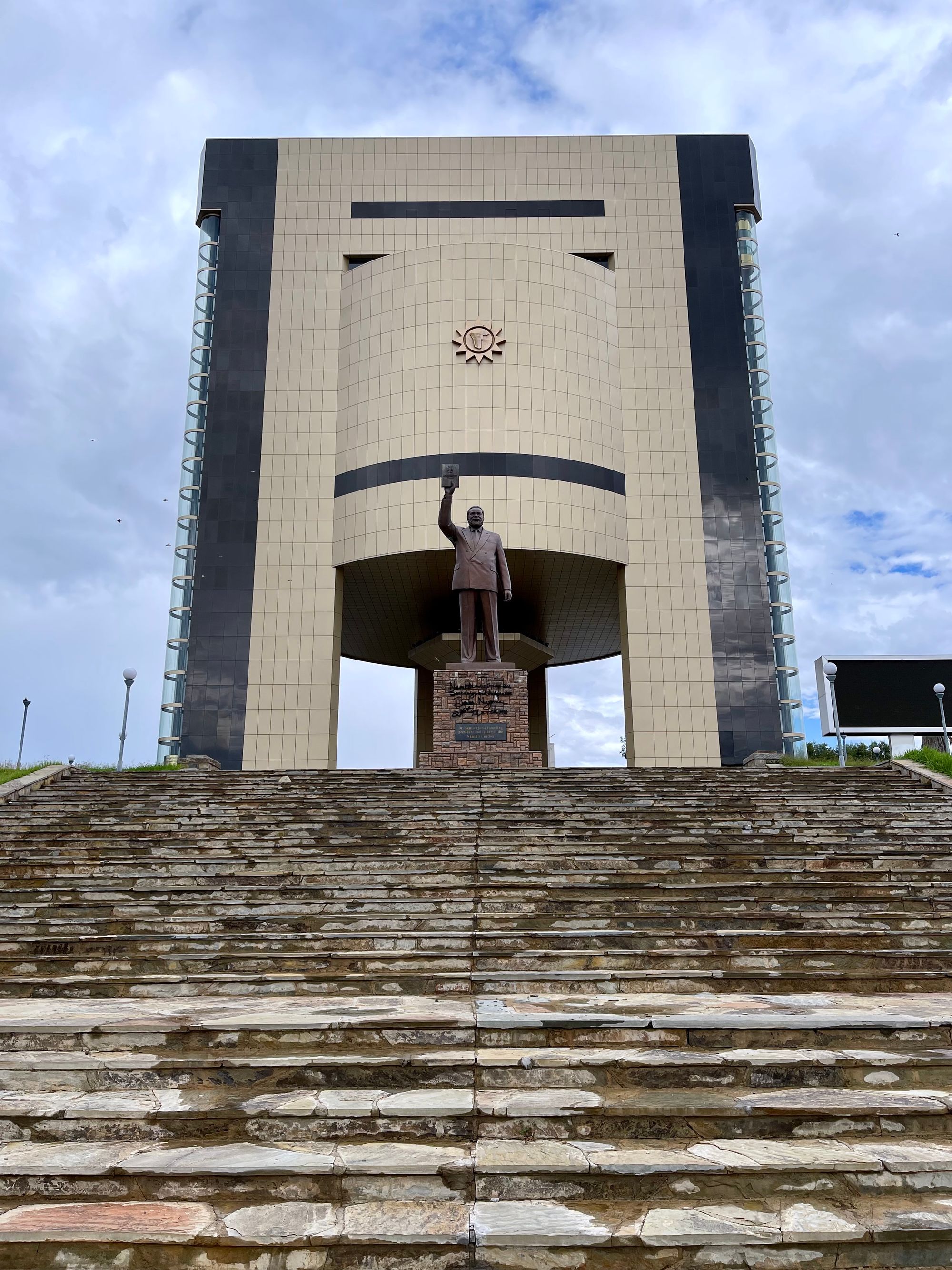
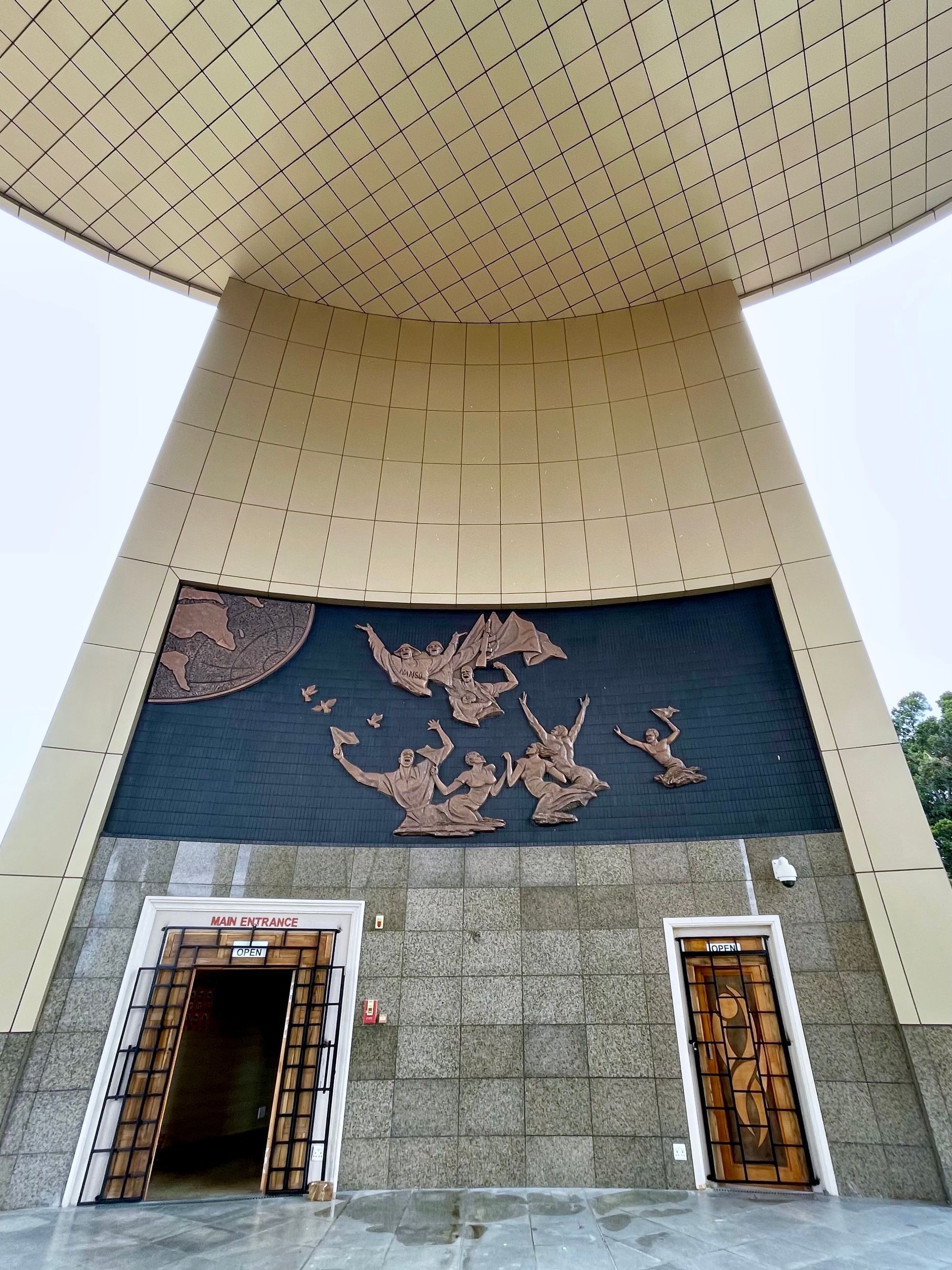
I returned to my hostel and attempted to get some rest before the first day of the safari.
Days one and two, the "roads" less traveled
Aside from a few central arteries, most of the ways that you drive around Namibia are on graded dirt roads. Driving is the only way around—there is no public transportation. If you're driving yourself, then you'll want to opt for the 4x4 rental vehicle. The suspension and undercarriage of your 2WD rental sedan will get absolutely wrecked.
We started our day driving up to Otjiwarongo, stopping for supplies and a tiny lunch, before continuing onward to Etosha National Park.
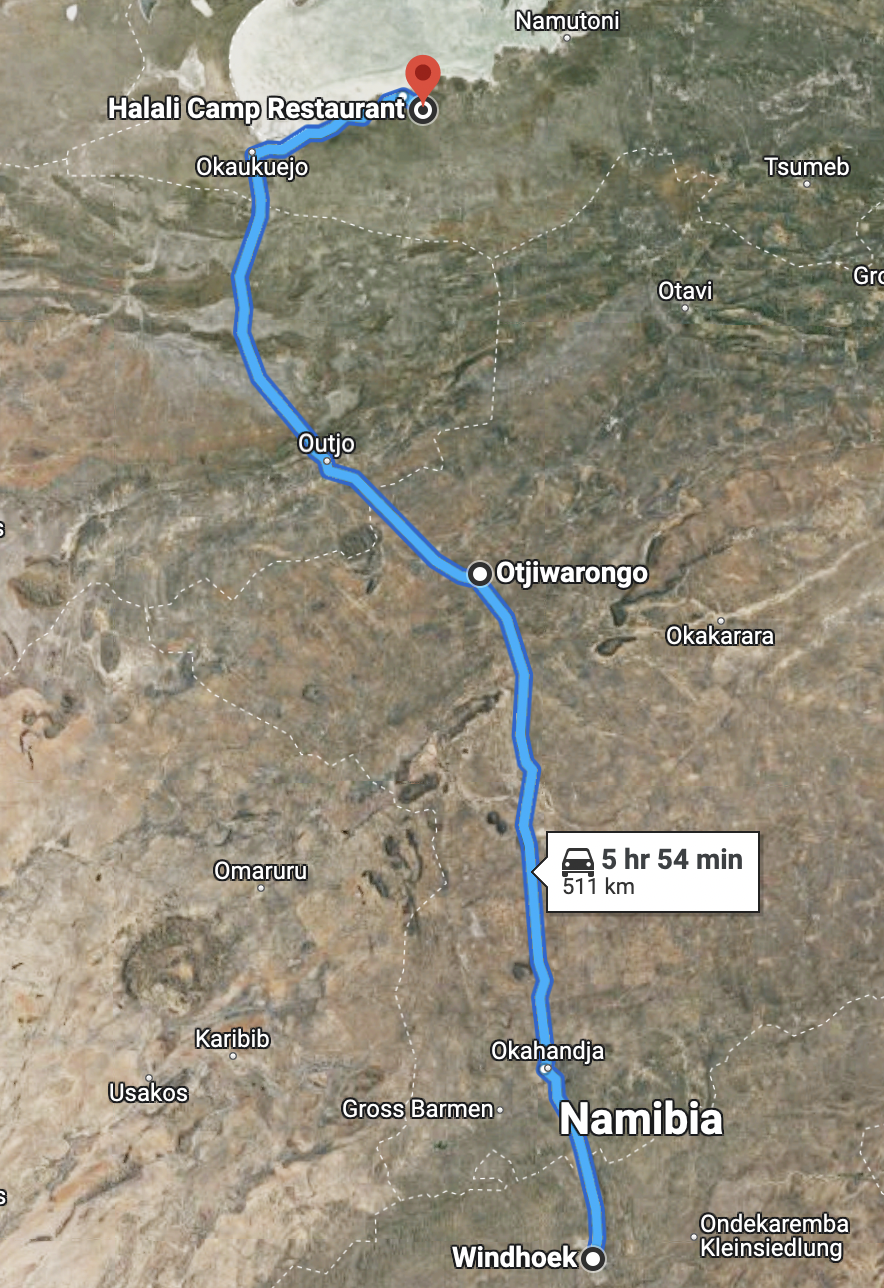
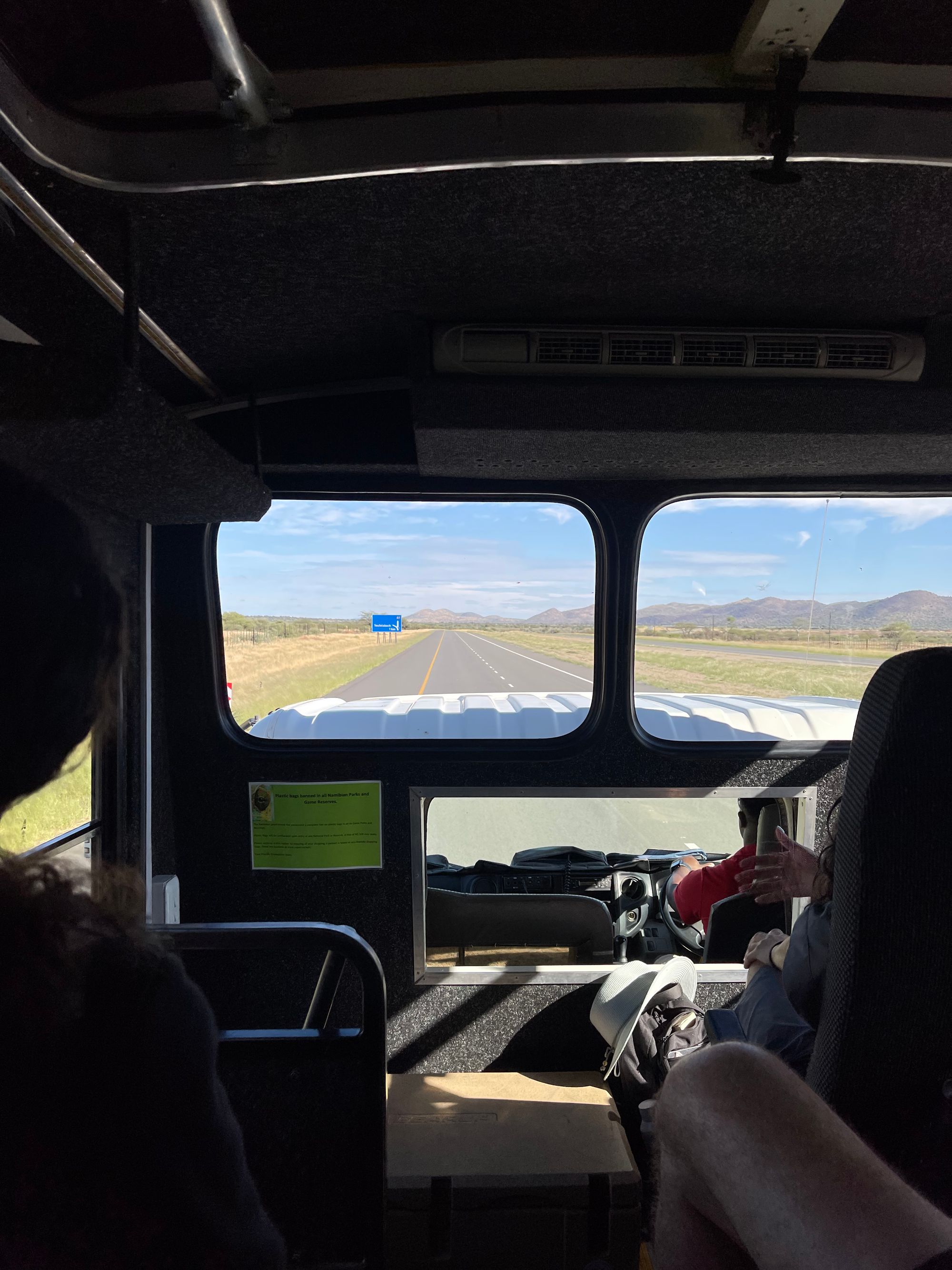

Etosha National Park is known for its great game viewing opportunities, particularly at the many waterholes found throughout the park. During the dry winter months, many different species of animals rely on these permanent water sources. Visitors can see large groups of zebra and springbok mingling with Oryx and bathing elephants at the larger waterholes. Some camps even offer floodlit waterholes where you can spot rhino, elephant, and lion drinking from the same spot.
Etosha is home to four of the "Big 5," including elephants, lions, leopards, and rhinos. The park also features a variety of other rare and endangered species such as the black-faced impala and the cheetah. The vast Etosha Pan, a large dried up salt pan, serves as a unique backdrop for game viewing. Unfortunately for us, we made our trip in the Summer, where rainfall is abundant in northern Namibia and animals are reticent to visit watering holes when water will arrive at their hideouts. This makes game viewing challenging, but we were still able to spot some from our vehicle.
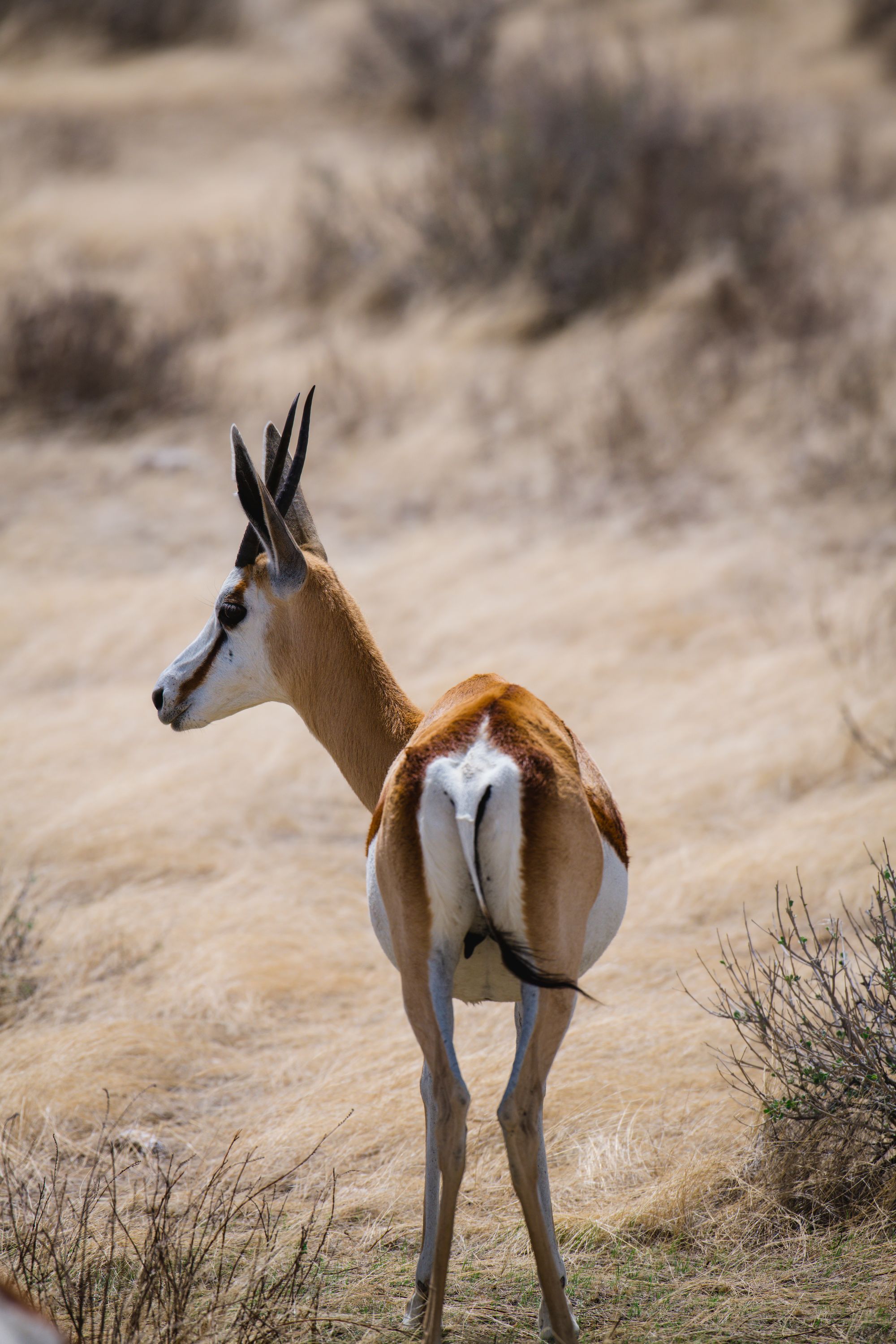
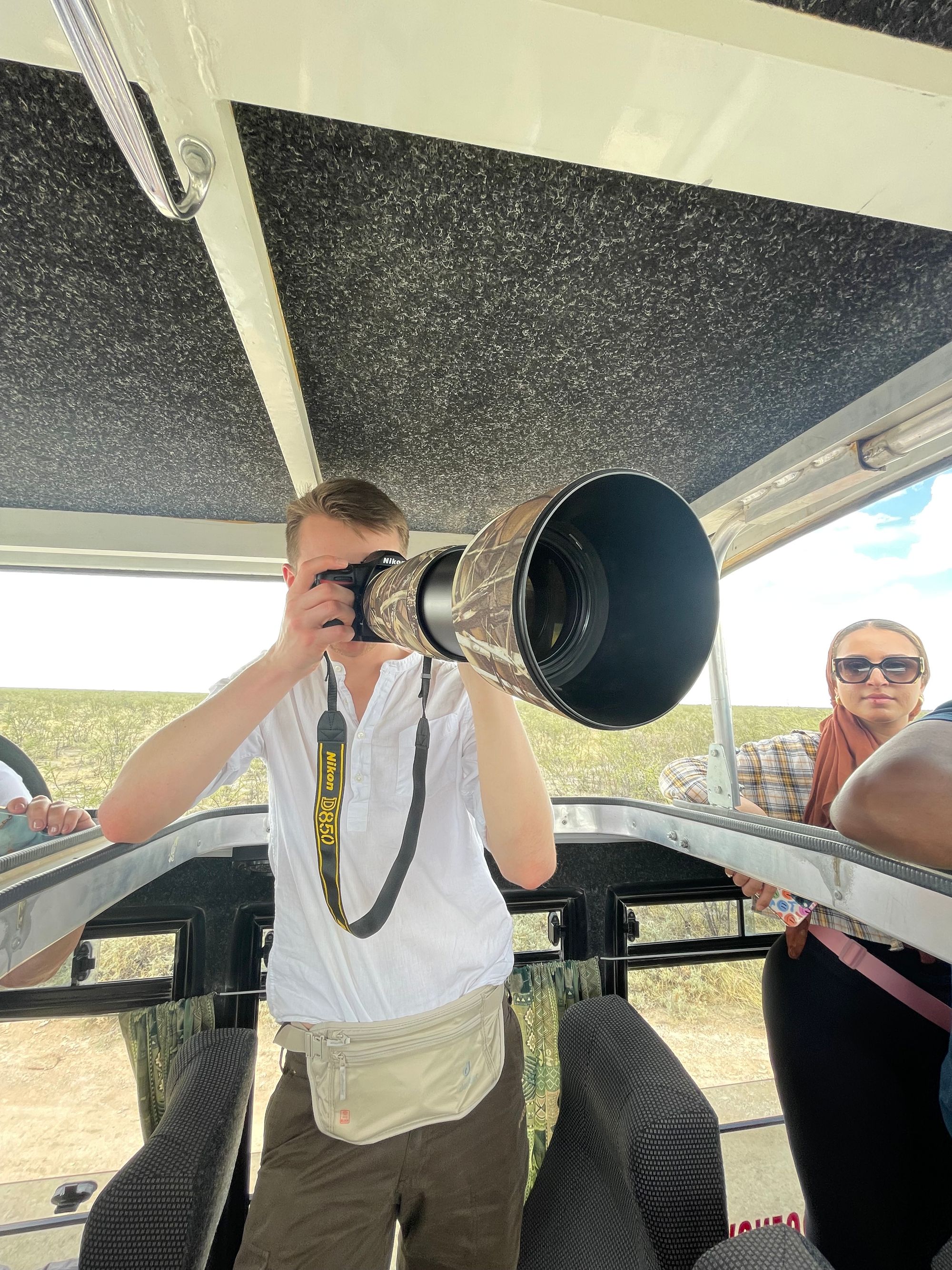
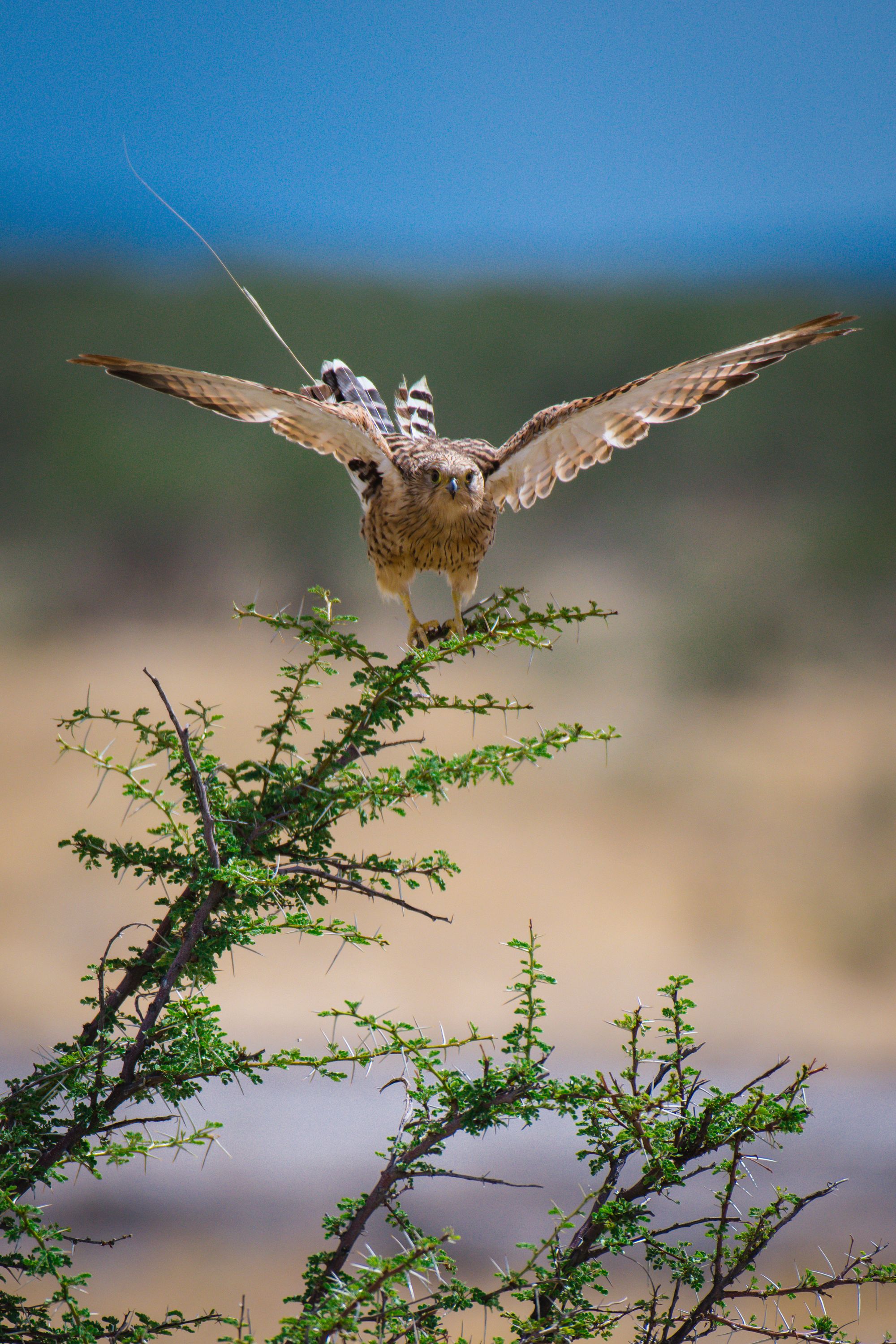
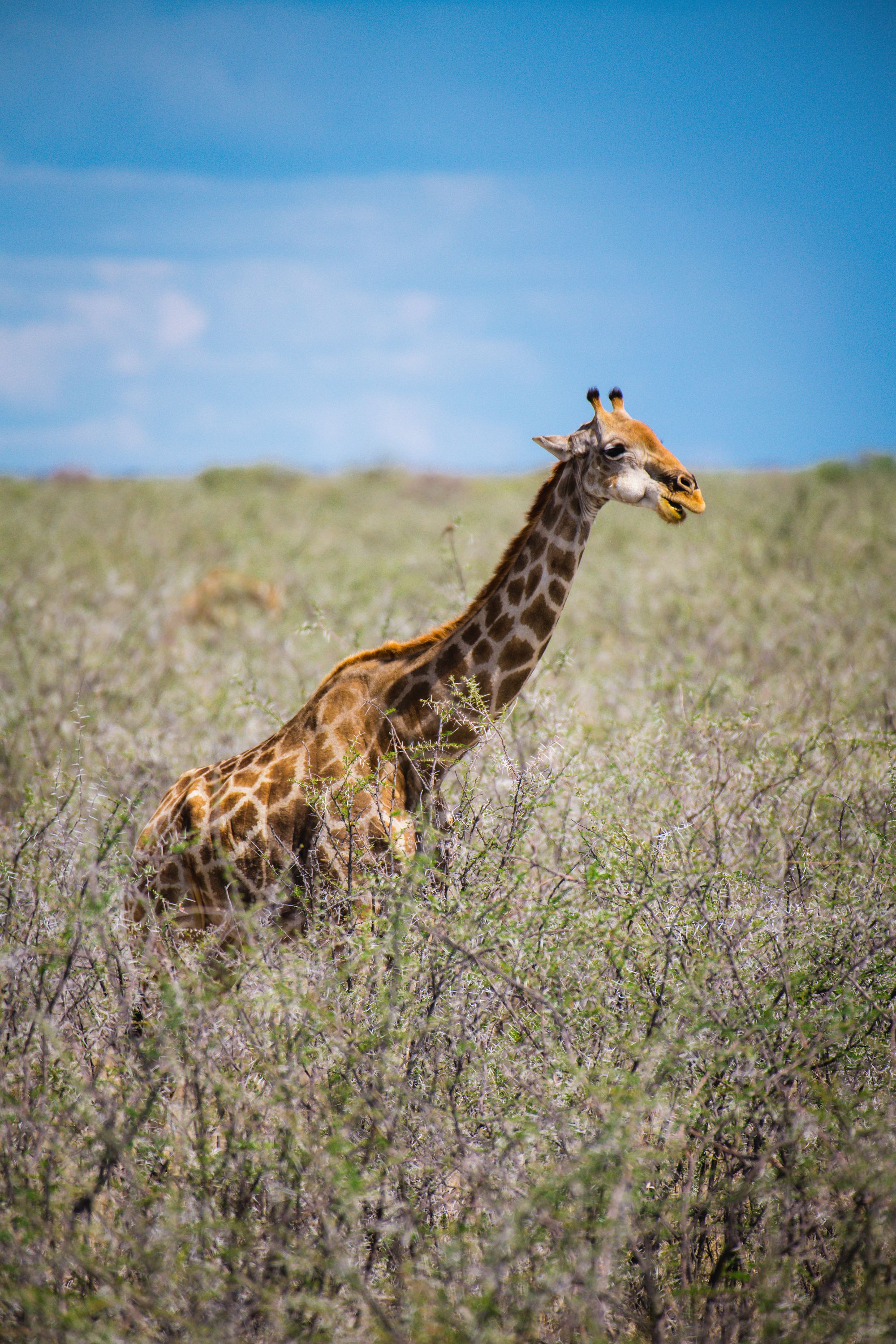
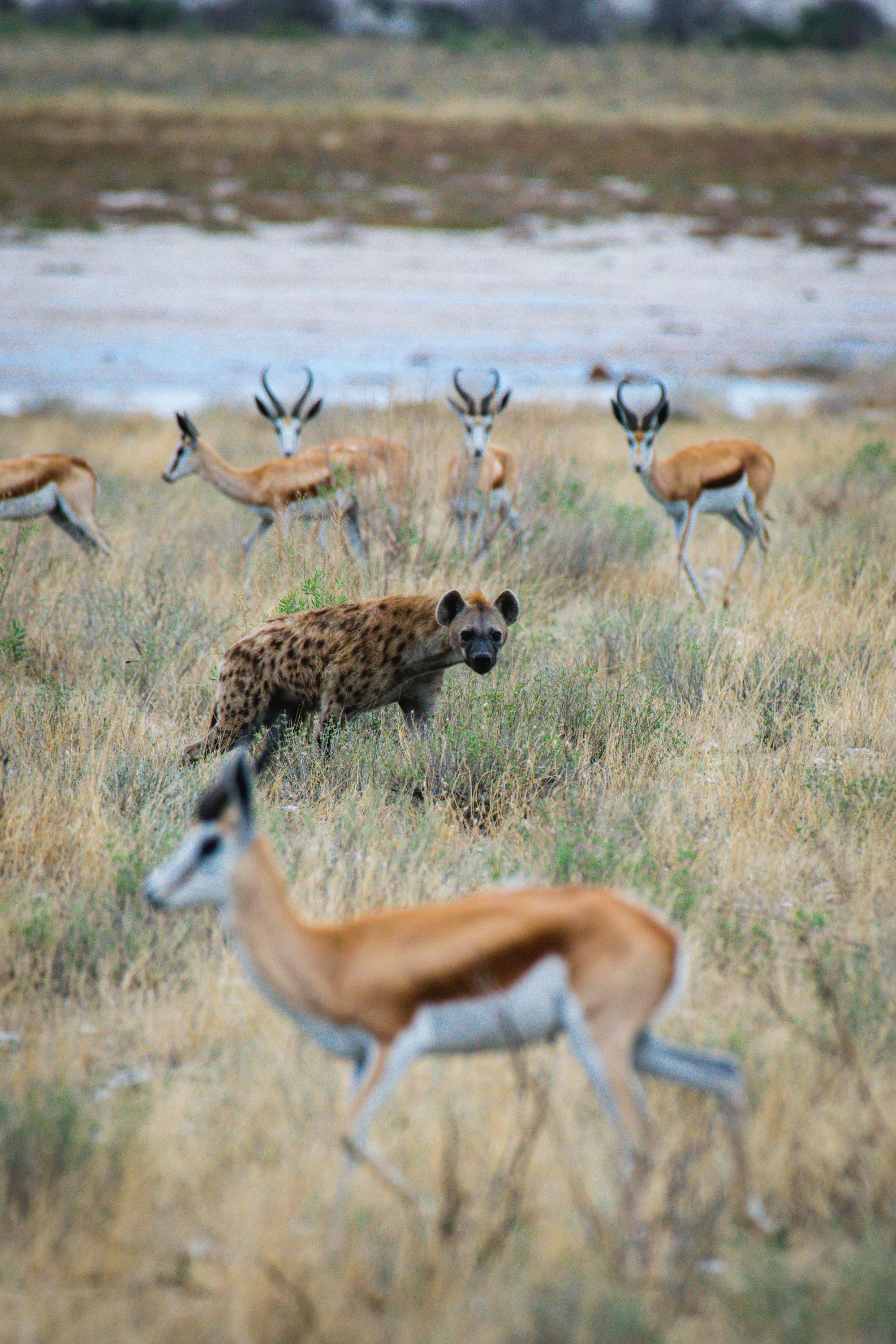
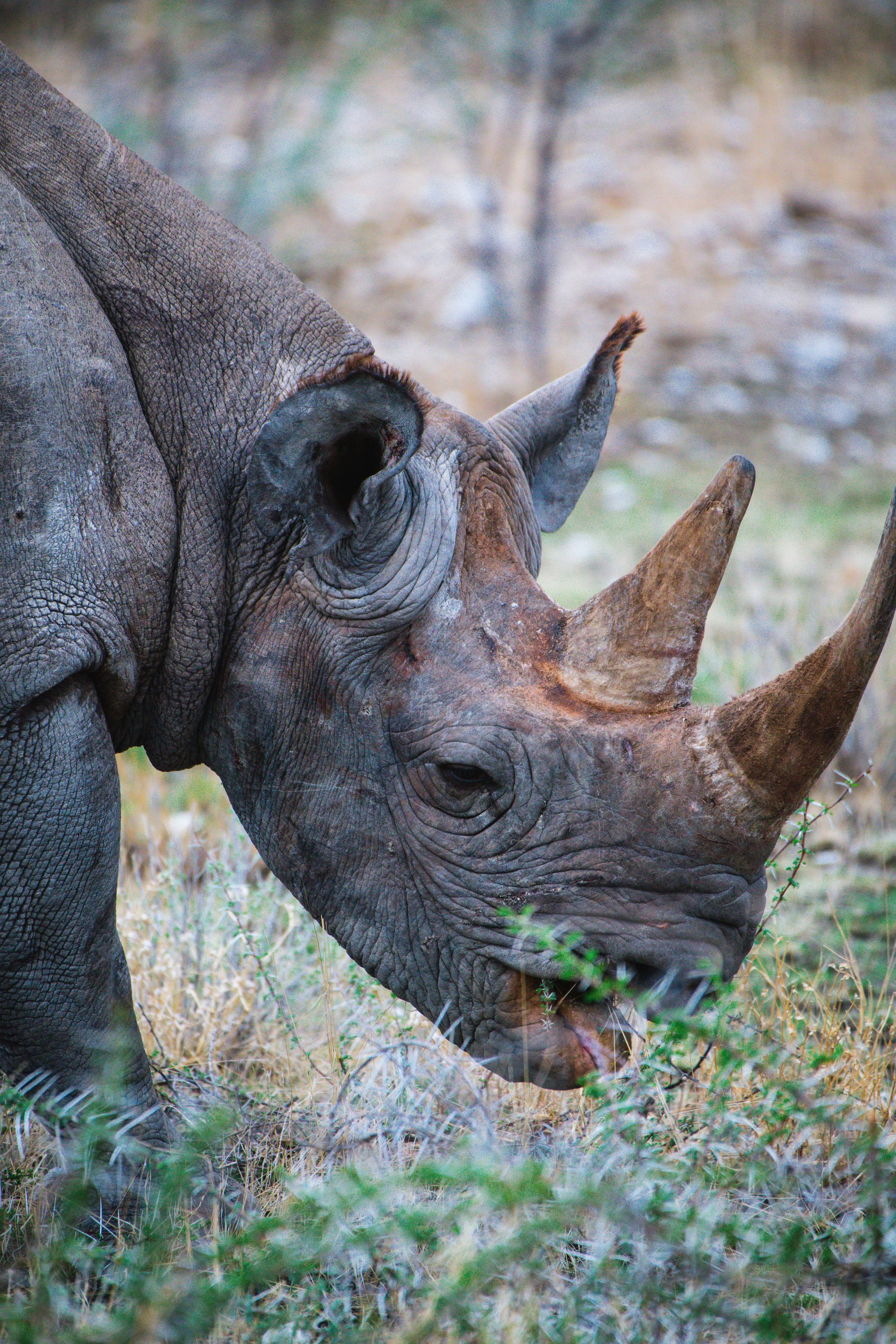
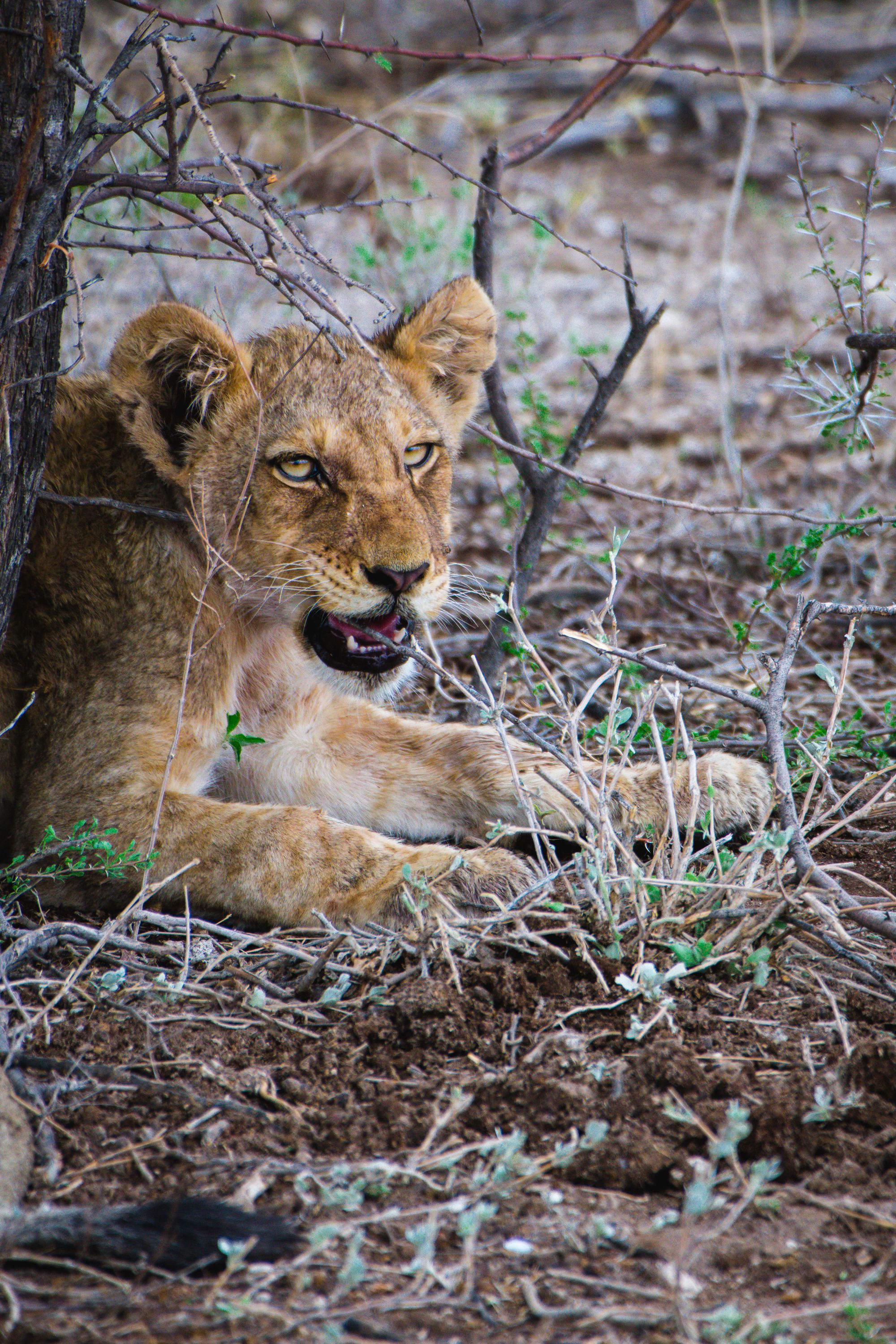
Days three and four, the enormity of nothing will astonish
In a 2016 essay for The New York Times, my cousin Sarah Khan wrote that "Namibian soil is the souvenir that reappears when you least expect it, bringing with it a sand storm of memories." I probably found it in every crack and crevice of my technology and belongings for a week and a half after I left Namibia.
We began our endeavor into the desert by heading south west from Etosha, making curated stops along the way to visit Native Damara, Kavango, Tswana, Herero and Himba people.
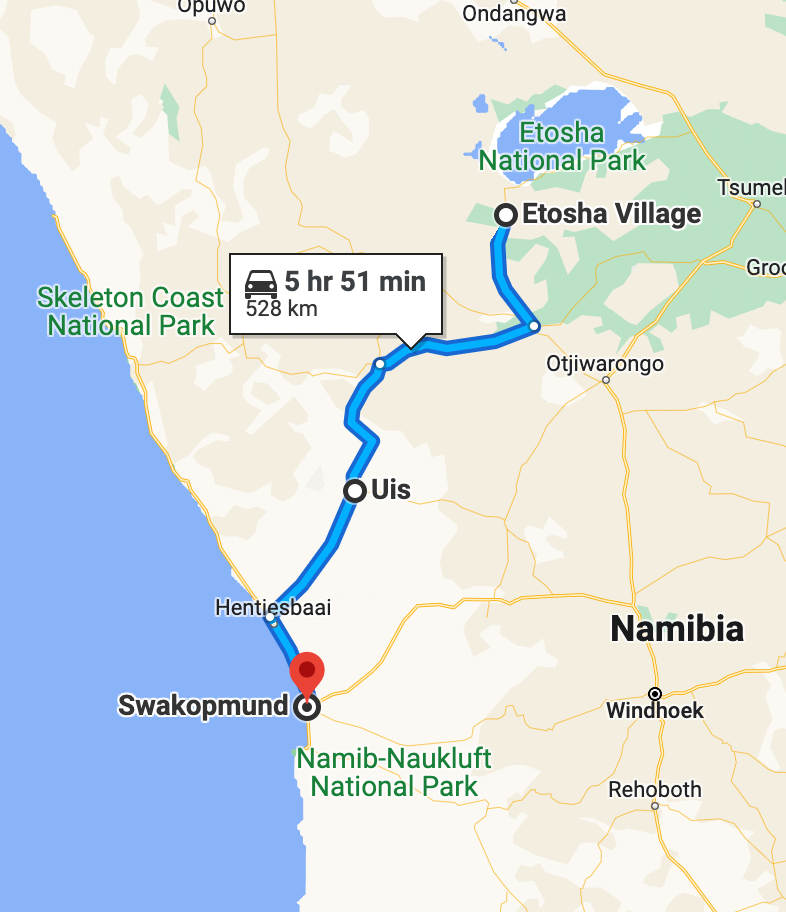
Admittedly, I am not a huge fan of 'Native-gazing' activities that tourists partake on during their visit to the continent of Africa—it feels both reinforcing of white supremacy, and also of the post-colonial economic destitution that colonial institutions placed on Natives who weren't allowed self determination. Therefore I will not be sharing any photos of those moments that I reluctantly experienced.
Instead, I'll share a little about the Herero people and show these beautiful dolls I found that they make and sell as a tourist commodity.
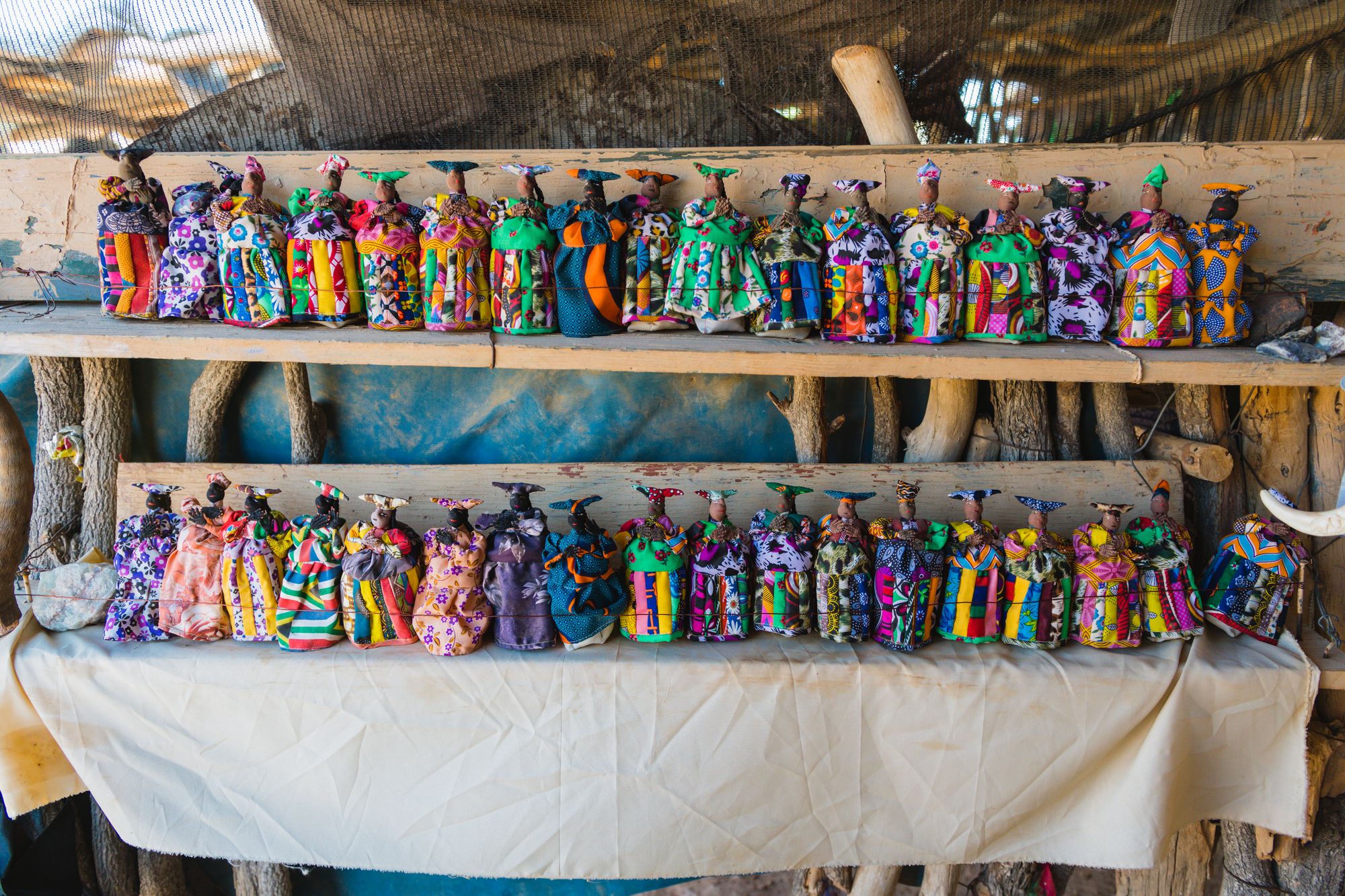

A brief history of German South West Africa, as experienced by the Herero and Himba people
The colonization of Namibia by the Germans began in the late 19th century. In 1884, the German Empire claimed the territory as a protectorate and established the colony of German South West Africa. The German government encouraged settlement by Germans and sent thousands of German farmers and merchants to the colony. They brought new technology and infrastructure, such as railroads and telegraph lines, but also imposed their culture and laws on the indigenous people.
The German colonial administration implemented racist policies and the indigenous people, particularly the Herero and Nama people, were subjected to forced labor, dispossession of their lands, and suppression of their culture. They also promoted the use of German as the official language and suppressed the use of local languages. The legacy of this is still visible today.
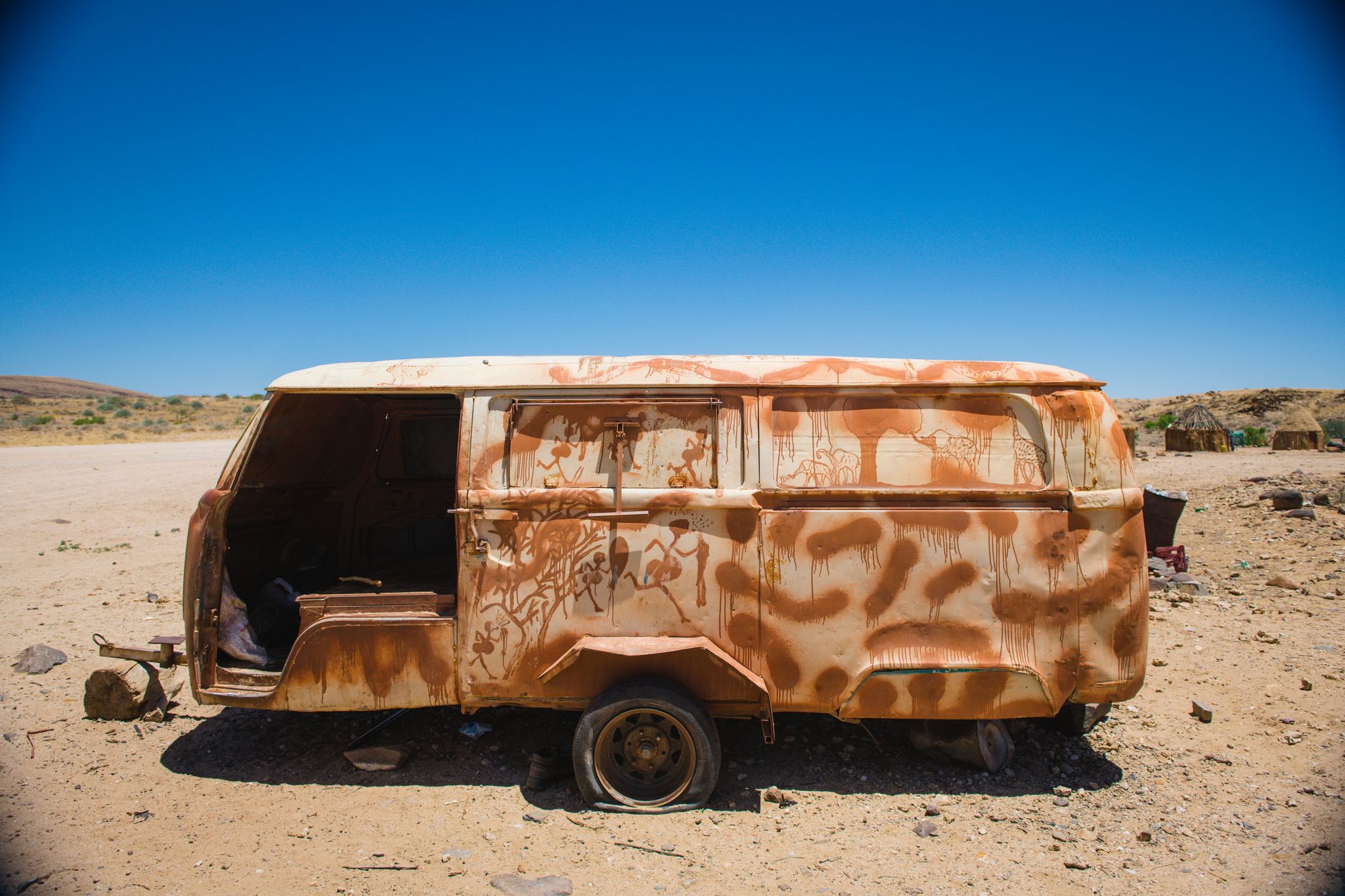
Sexualization towards domestication
In Damaraland, the area we passed through on our way to the city of Swakopmund, German settlers acquired land from the Herero in order to establish farms that they then hired Herero people to work on. At that time in history, our guide explained, the Herero dressed as the Himba continue do today, with garments covering lower genitalia for both sexes and leaving breasts exposed for women.
In Western societies, the objectification and sexualization of women has been perpetuated by media and advertising, as well as societal attitudes and power dynamics. In contrast, many traditional cultures, such as the Himba, have different attitudes towards nudity and the exposure of the female body. For the Himba, the exposure of the breasts is a sign of maturity and is not considered sexual. Additionally, the Himba people have a different understanding of modesty and the human body compared to Western societies.
When these two factors clash in the form of tourism, however, you find that tourists may find the nudity and traditional customs of the Himba tribe to be unique and intriguing, and may be attracted by the idea of experiencing something different from their own culture. However, it's important to remember that the Himba's nudity should not be objectified, it's part of their culture and way of life, not entertainment or spectacle.
The Herero once people dressed as the Himba do now, but no longer. The German colonizers forced the Herero people to wear Victorian-style clothing, including long dresses, petticoats and Victorian hats. This was a way for the German colonizers to assert their dominance and culture over the Herero. The Herero were forced to wear these clothes as part of the process of being "civilized" into German society, and also so they could eventually be domesticated for the colonial labor force as workers fit for expatriated German society.
The Herero and Nama genocide, the first genocide of the 20th century, was a consequence of the increased tensions brought on by German colonization. Between 24,000 and 100,000 Hereros and 10,000 Nama died as a result of starvation, imprisonment and concentration camps set up by the German Empire to keep them in the Namib desert.
The Herero genocide is considered as one of the first genocides of the 20th century and is a tragic reminder of the devastating consequences of colonialism and the belief in racial superiority.
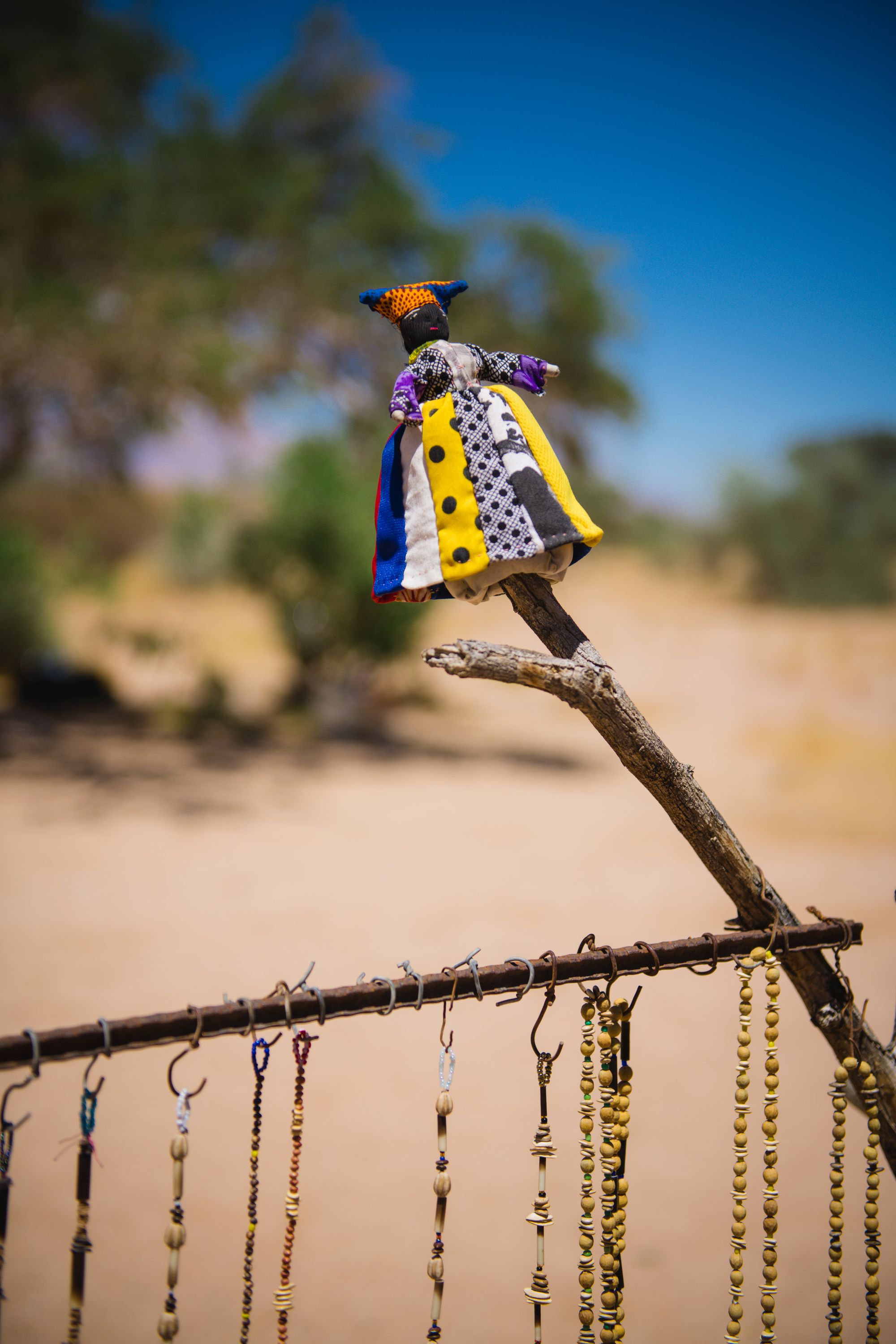
At nightfall, we arrived in Swakopmund, a beautiful German colonial city established in 1892.
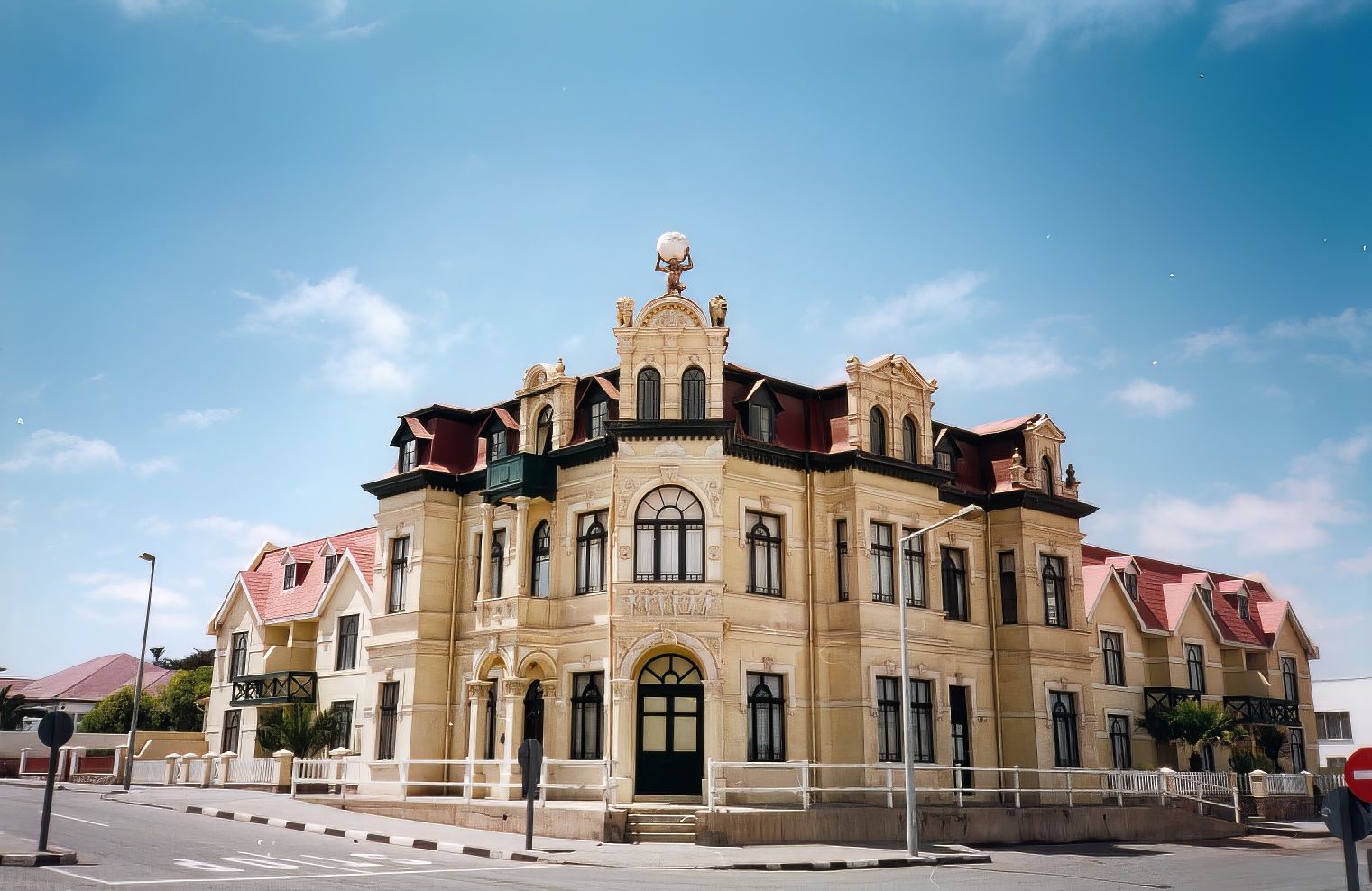
On the agenda was dinner and rest, before we set off the next morning to witness one of the great wonders of the southern African continent.
Meet me at the top of where the sand meets the ocean
Just south of Walvis Bay, at the edge of the South Atlantic Ocean, is Sandwich Harbour.
Sandwich Harbour is a place of breathtaking beauty, where the vast expanse of the ocean collides with towering dunes of gold. The sun-bleached dunes rise up like sentinels, their peaks etched against the endless blue sky. The dunes seem to stretch on forever, a never-ending landscape of undulating peaks and valleys. And yet, amidst all this grandeur, there is a sense of stillness and serenity that is almost palpable. Like a painting come to life. The orange-yellow of the dunes, the deep blue of the ocean, and the endless expanse of the sky all merge together in a symphony of colors that is both breathtaking and humbling.
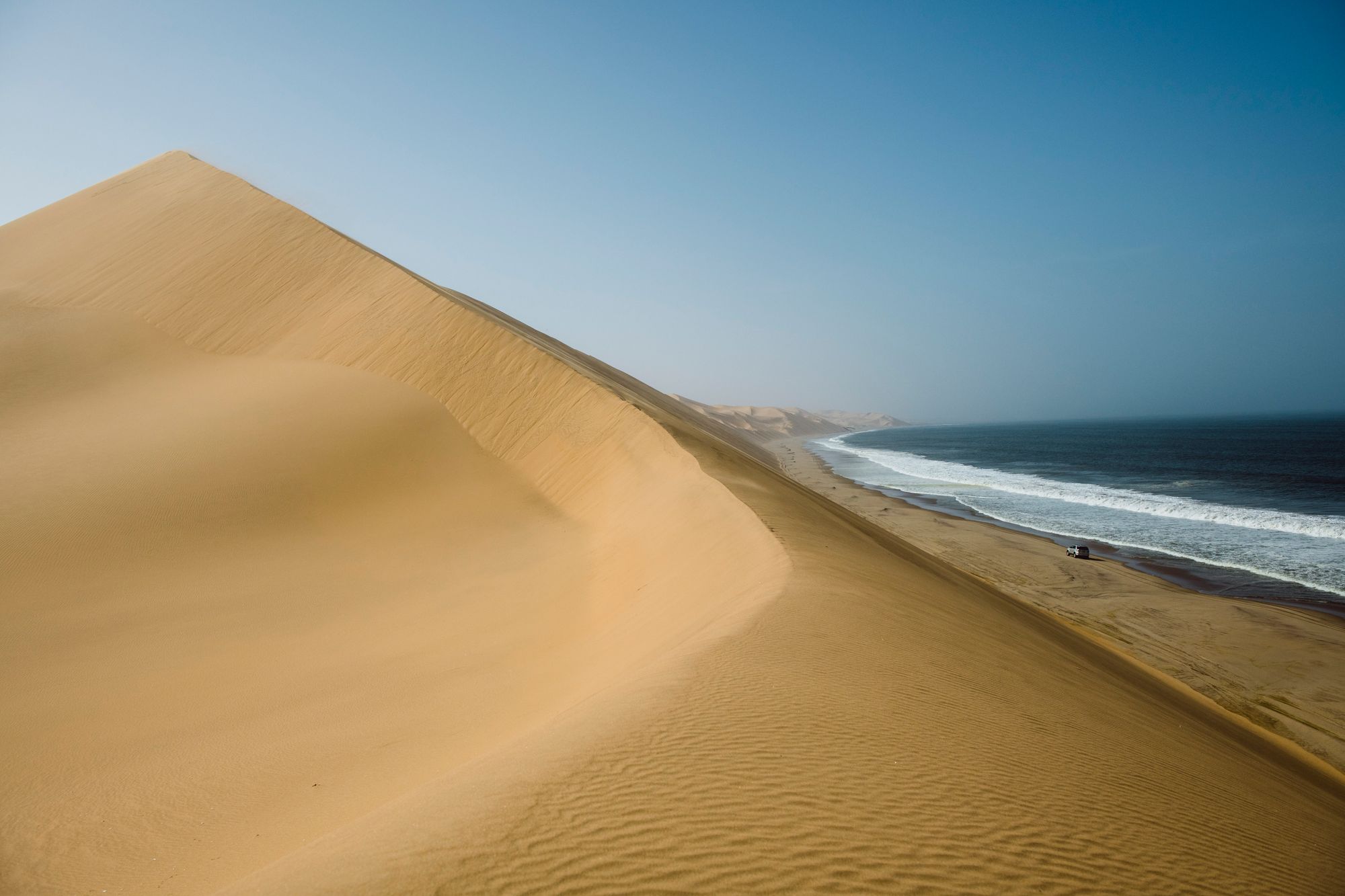
Even more astonishing is the fact that people drive on, and are able to navigate, this land. A new guide met us in Swakopmund and had five of us pile into his tiny 7-seater 4x4 SUV.
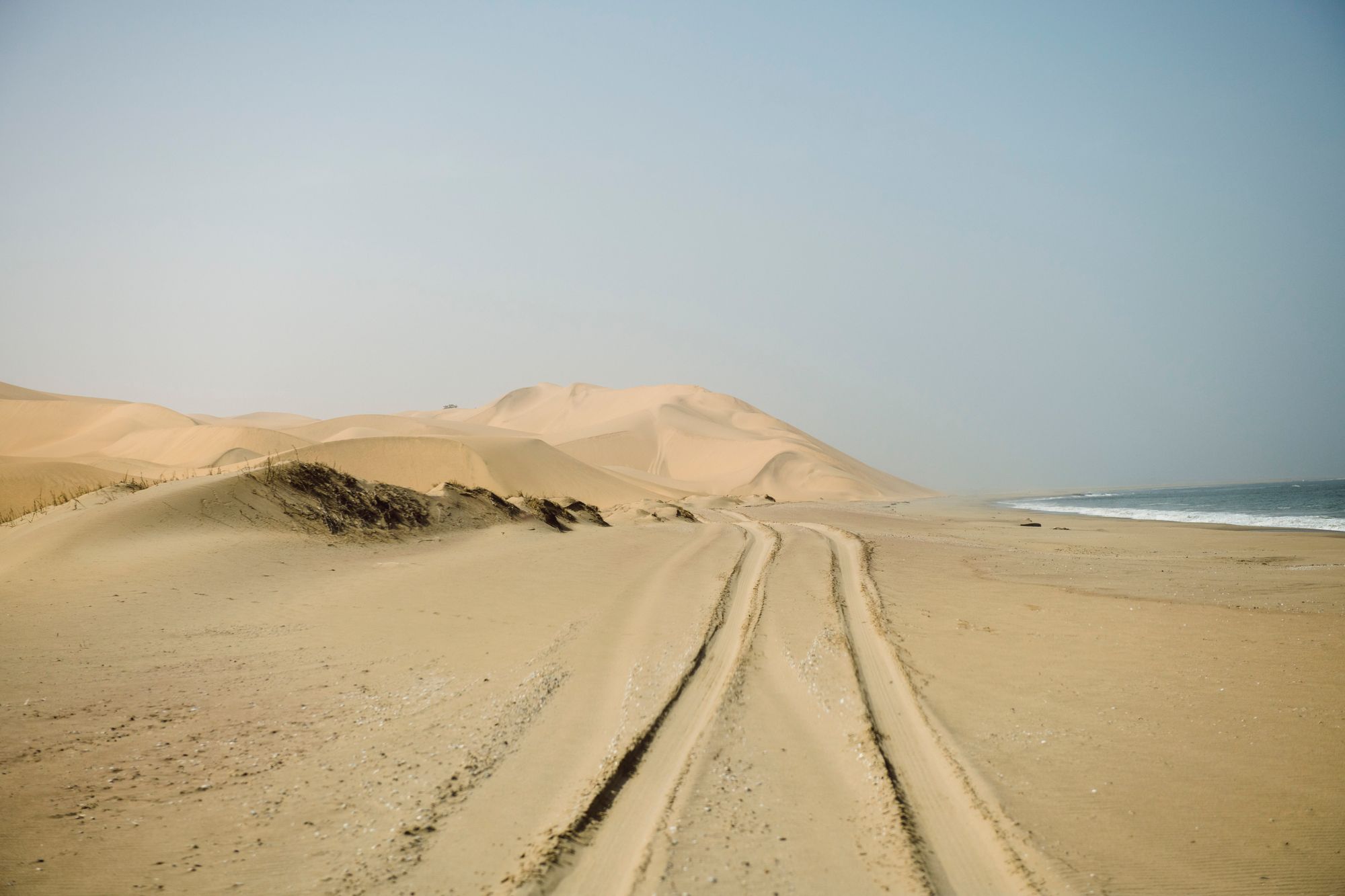

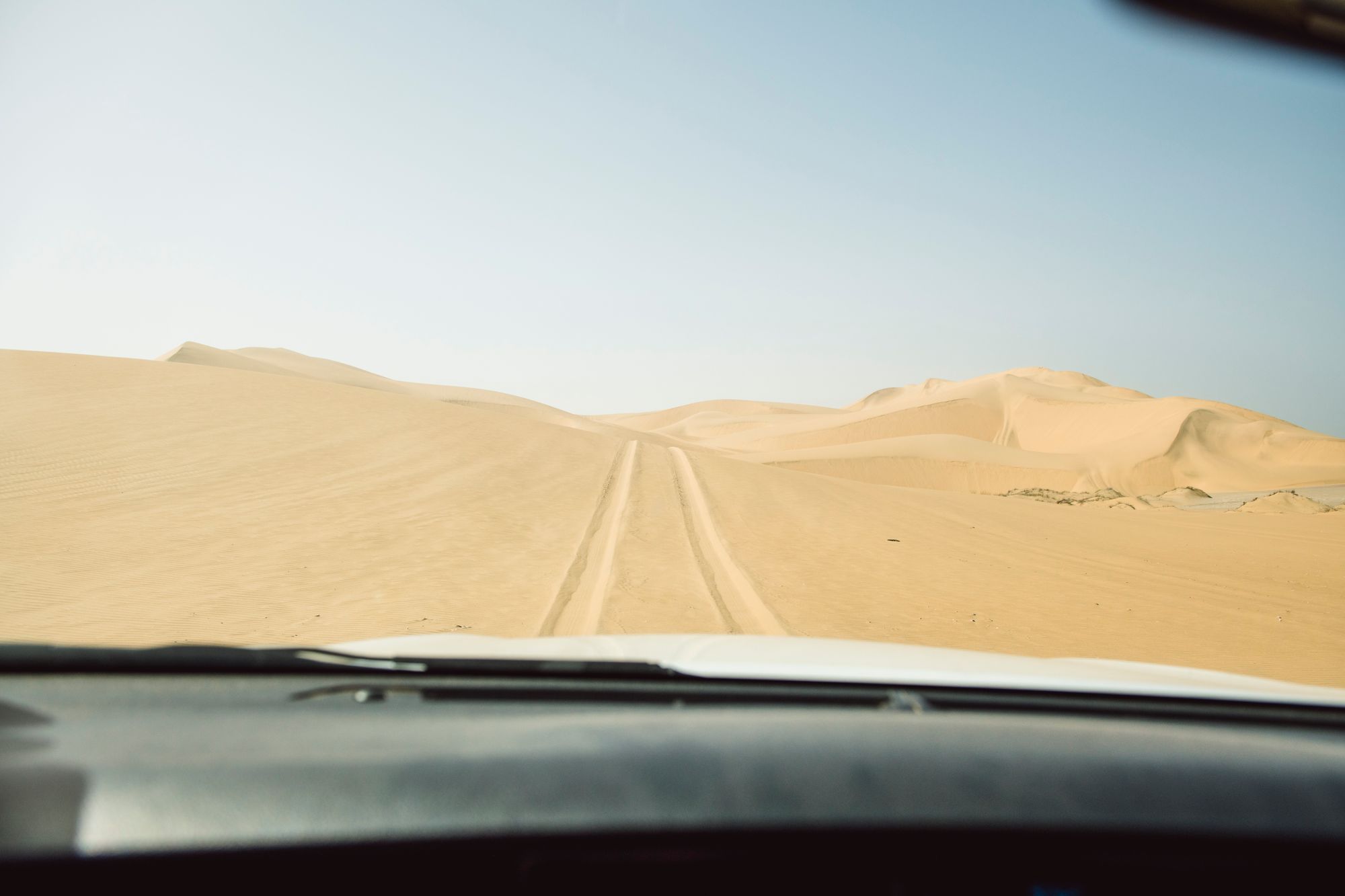

We made many stops in Sandwich Harbour to find new vantages to access the seas of gold and blue. It was at this point that I learned the trick of digging your bare feet about 4 inches into the sand in order to keep them cool, as the scorching heat certainly took the joy out of the spectacle.
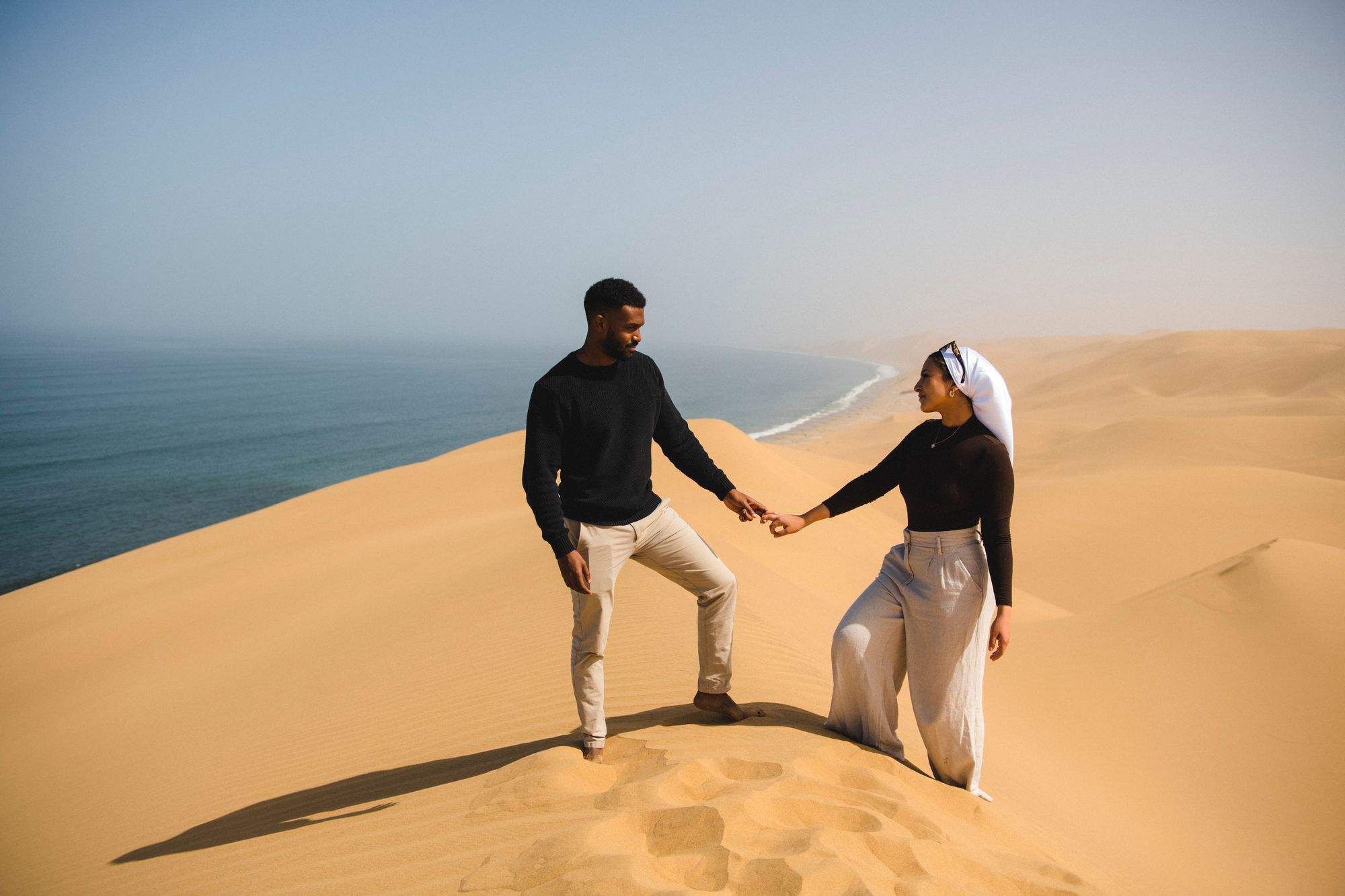
It really is good that the ocean is there, because if not for it I am certain our driver would have been lost.
Unfortunately, I wasn't careful enough with the Fuji, and there is sand in the device. I'm hopeful I can use some industrial strength compressed air to remove it, but until then the camera is "beached."
⚠️ Make sure that the equipment you bring is at least weather-sealed, and even that may not be enough! ⚠️
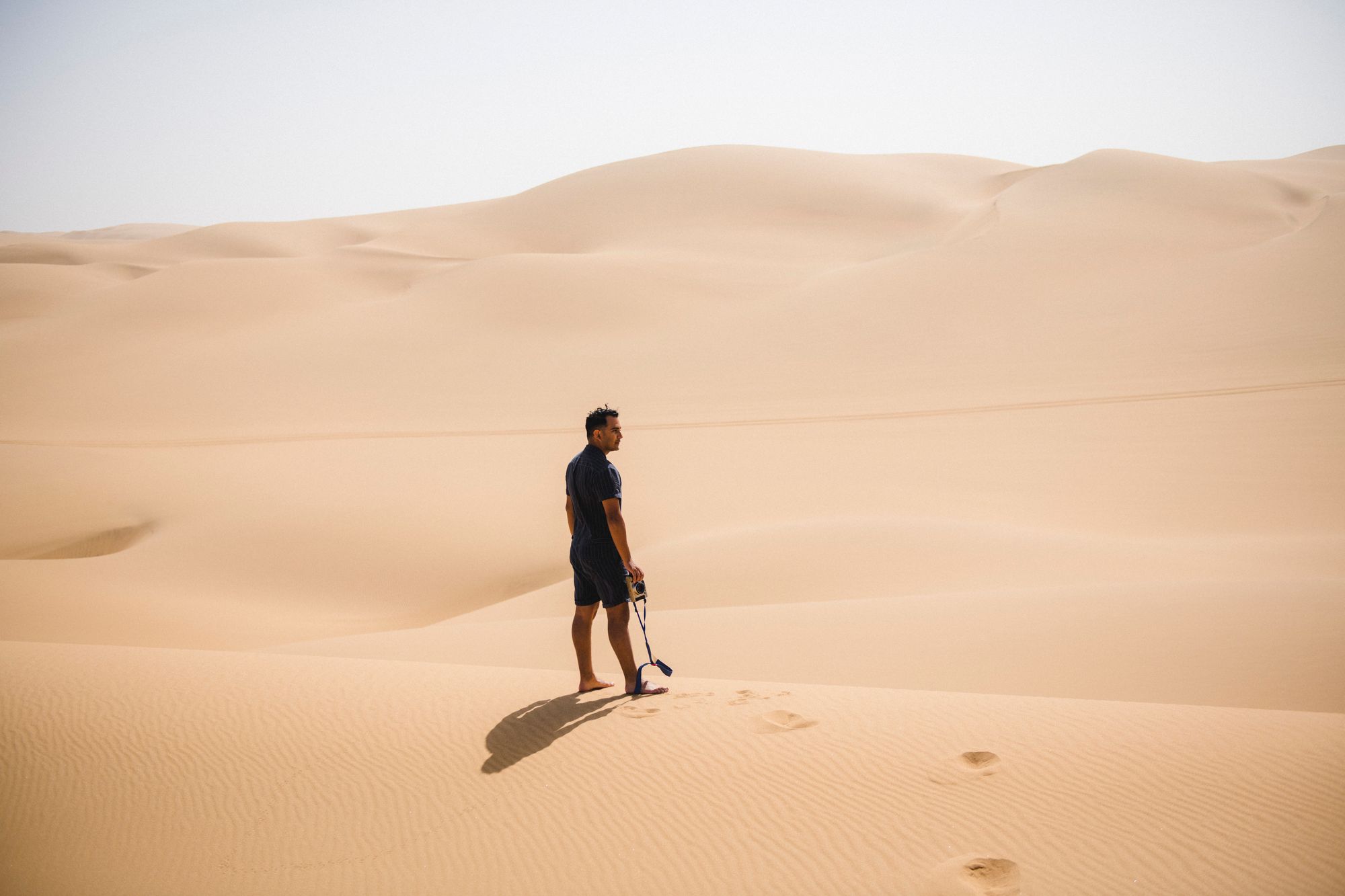
Day five and six, there is always more sand
After our adventure filled morning in Sandwich Harbour, we made the journey across the Namib desert to Desert Camp, just outside Sesriem, Namibia. The 300km journey had us passing through the Tropic of Capricorn, where we stopped for photos.
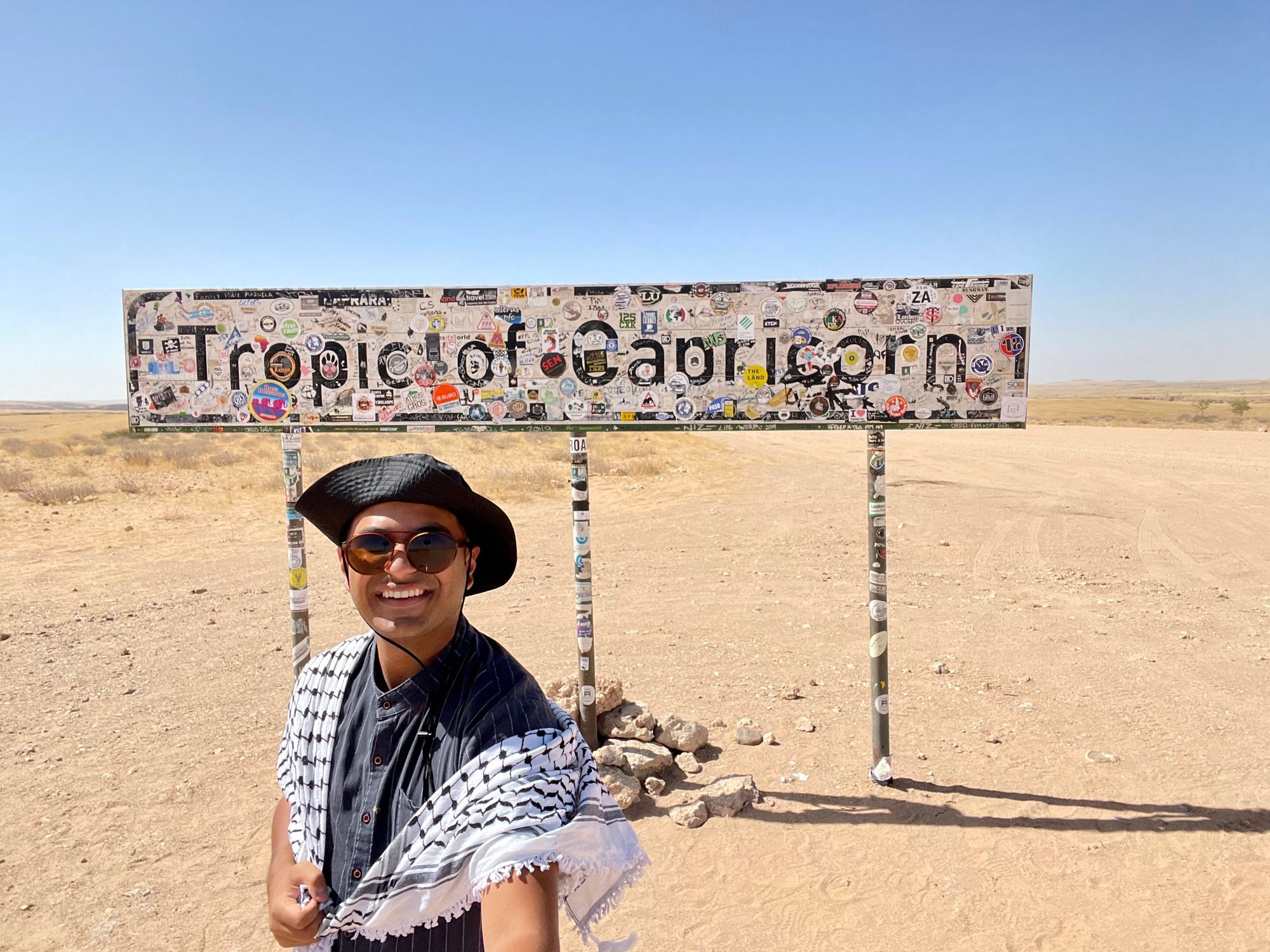
Desert Camp is located just outside the entrance to Sossuvlei, our destination for the fifth day. It's simple but comfortable, and located in utterly stunning landscape with great views at sunset. If you're luckier than myself, stay there during the new moon so that the total night sky stuns you with it's display of stars.
The next morning was day five. We departed before sunrise at about 5am to beat the queue into the National Park and were rewarded with beautiful sunrise views of the landscape before us.
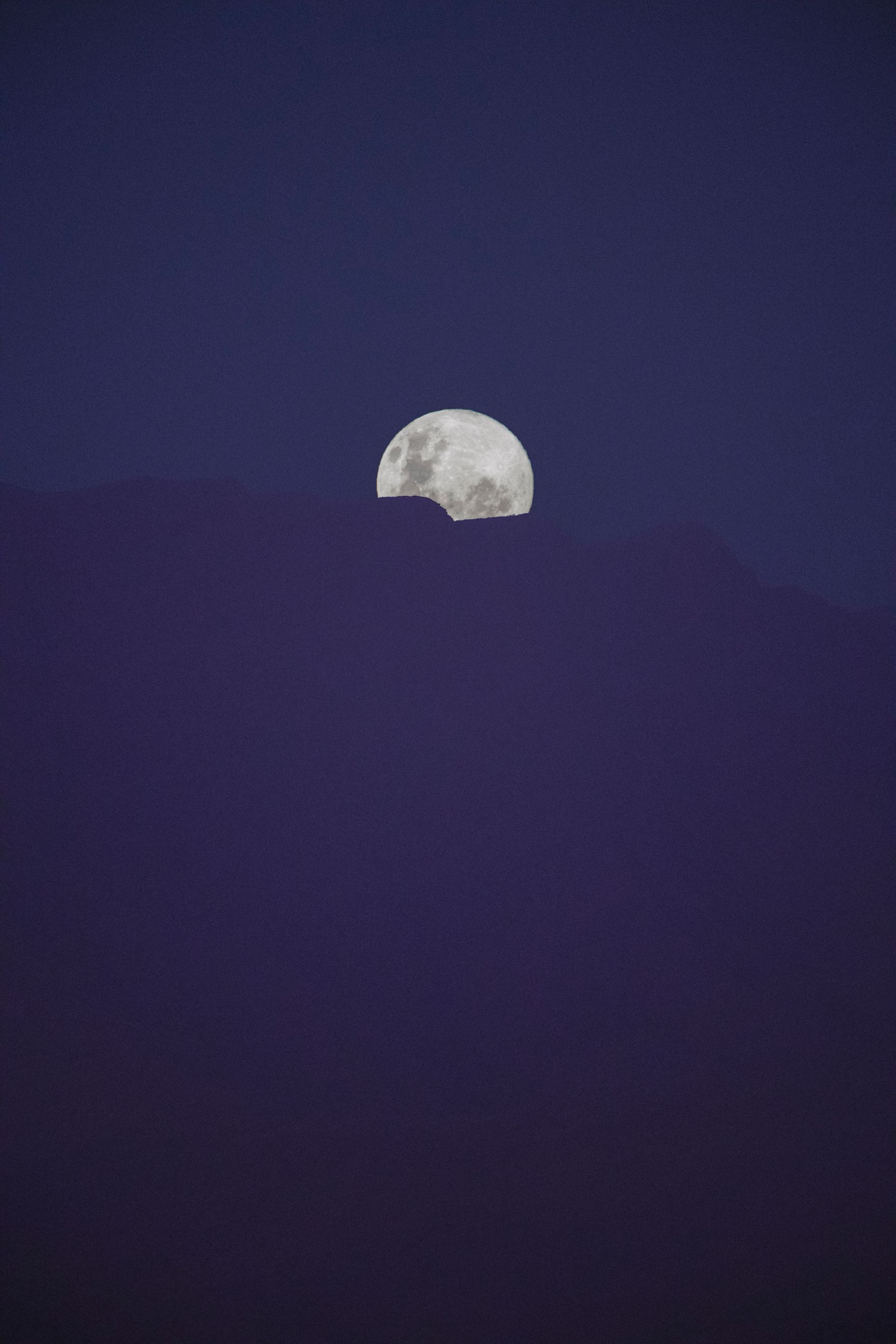
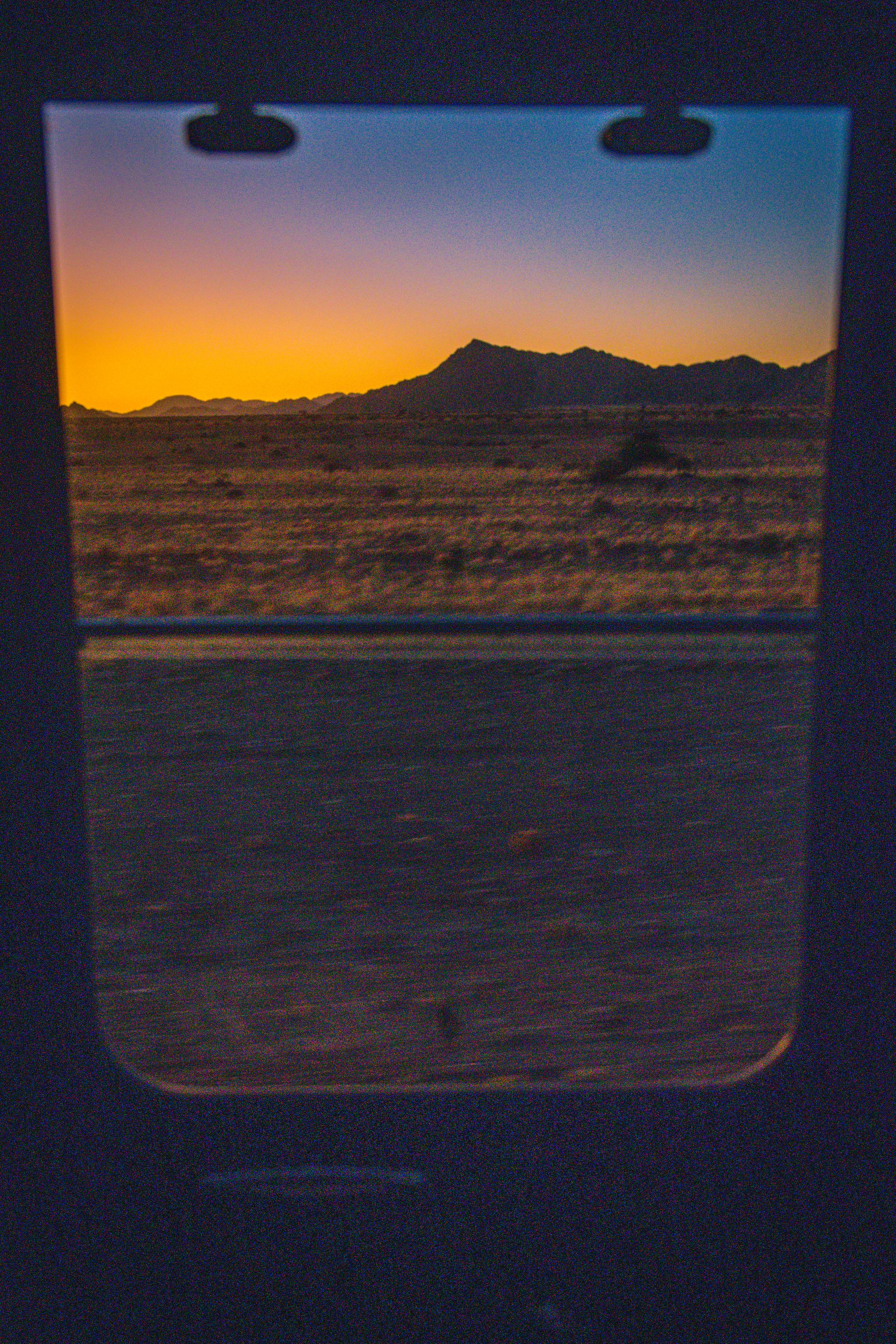

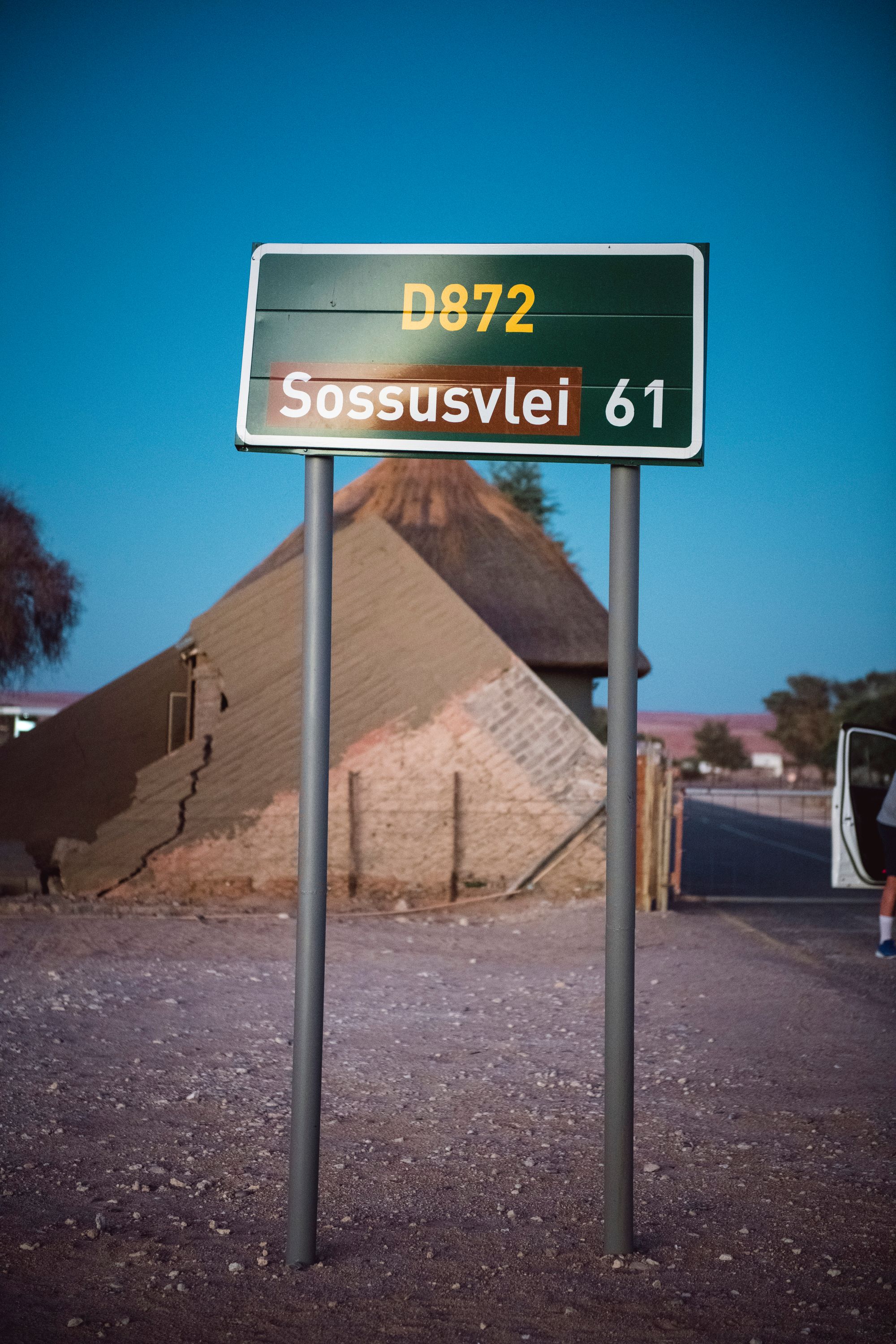
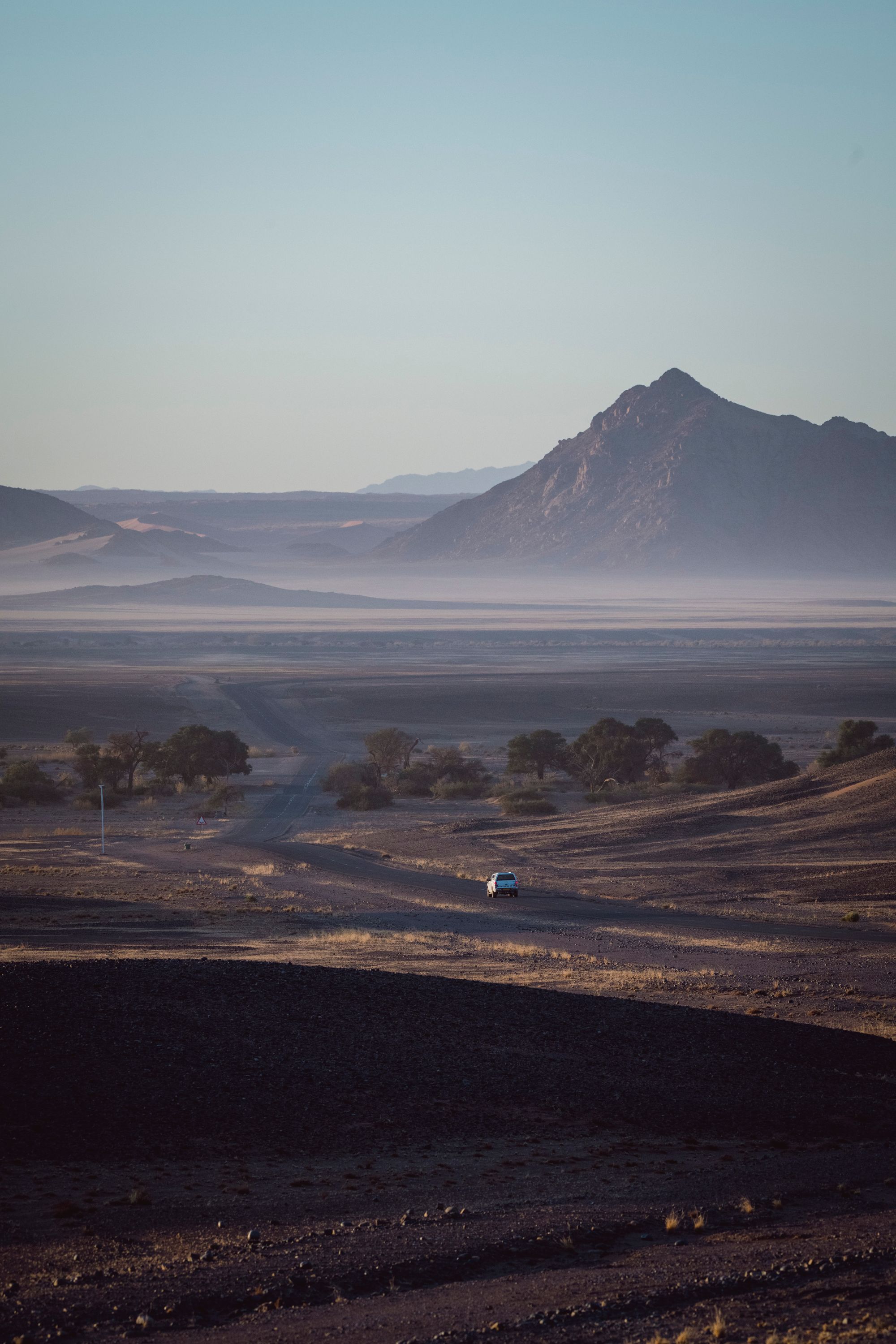
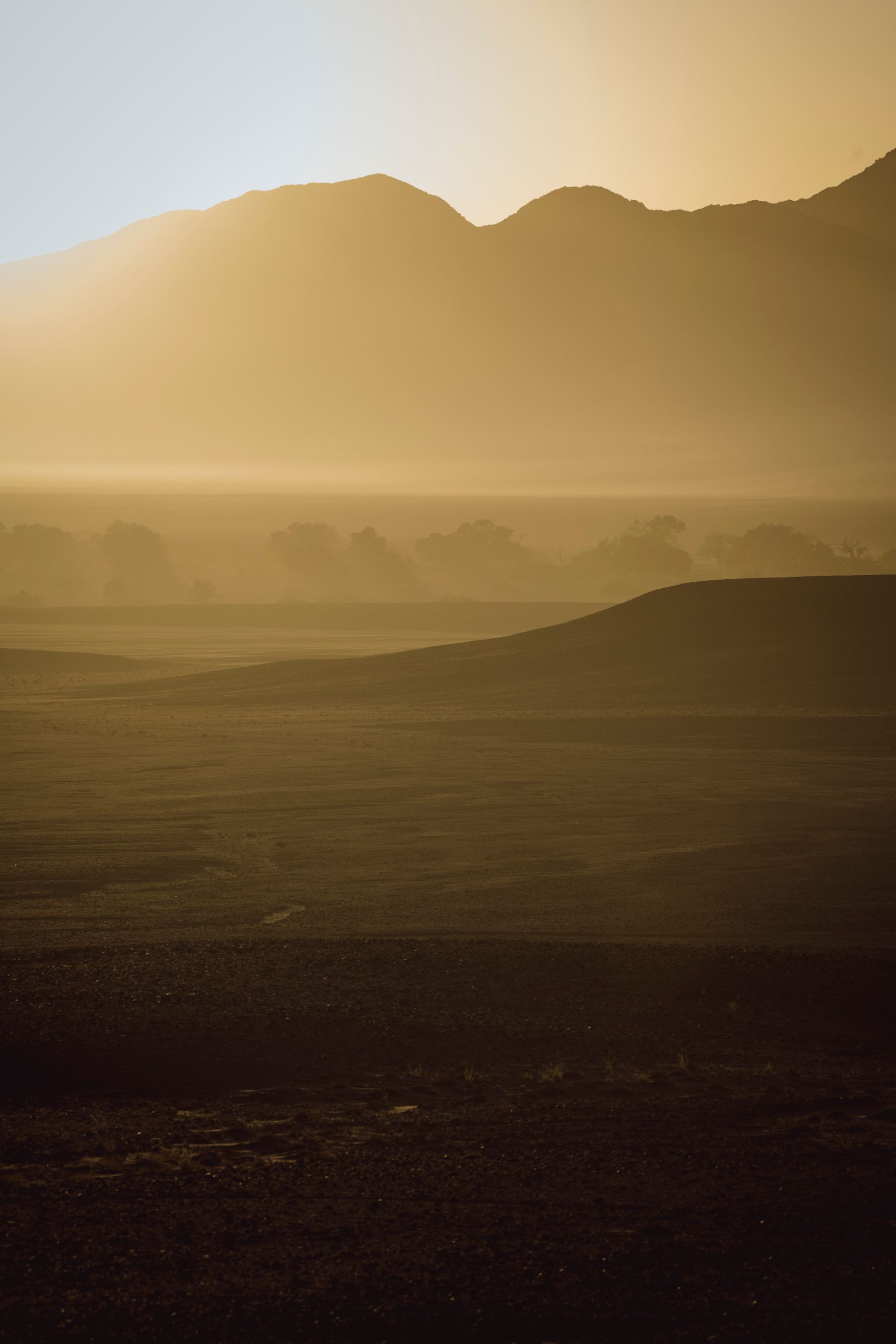
Rub your eyes because the postcard is real
After a brief 45 minute drive into the park, we made our first stop, rewarded by one of the most astonishing sights I've ever seen.

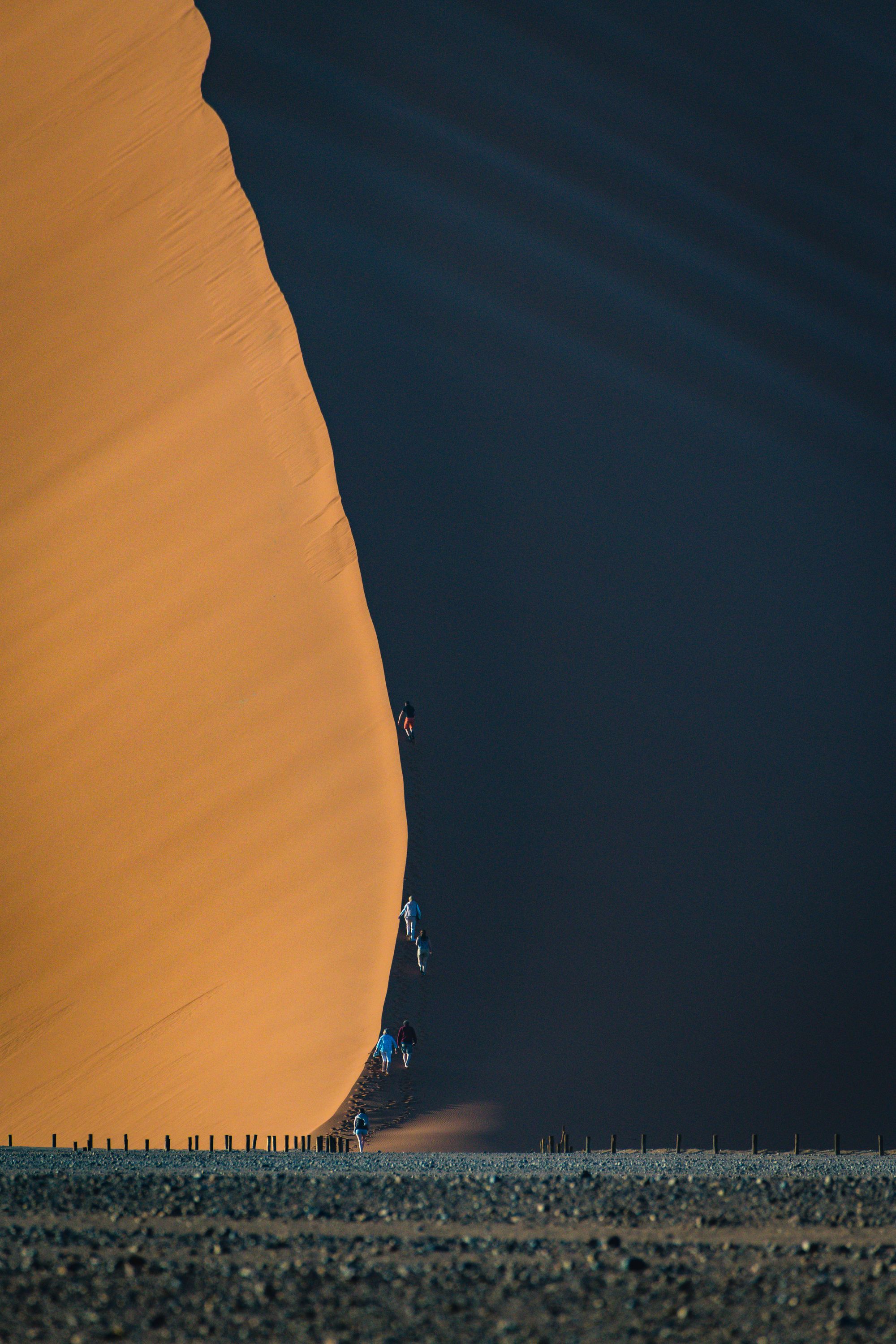
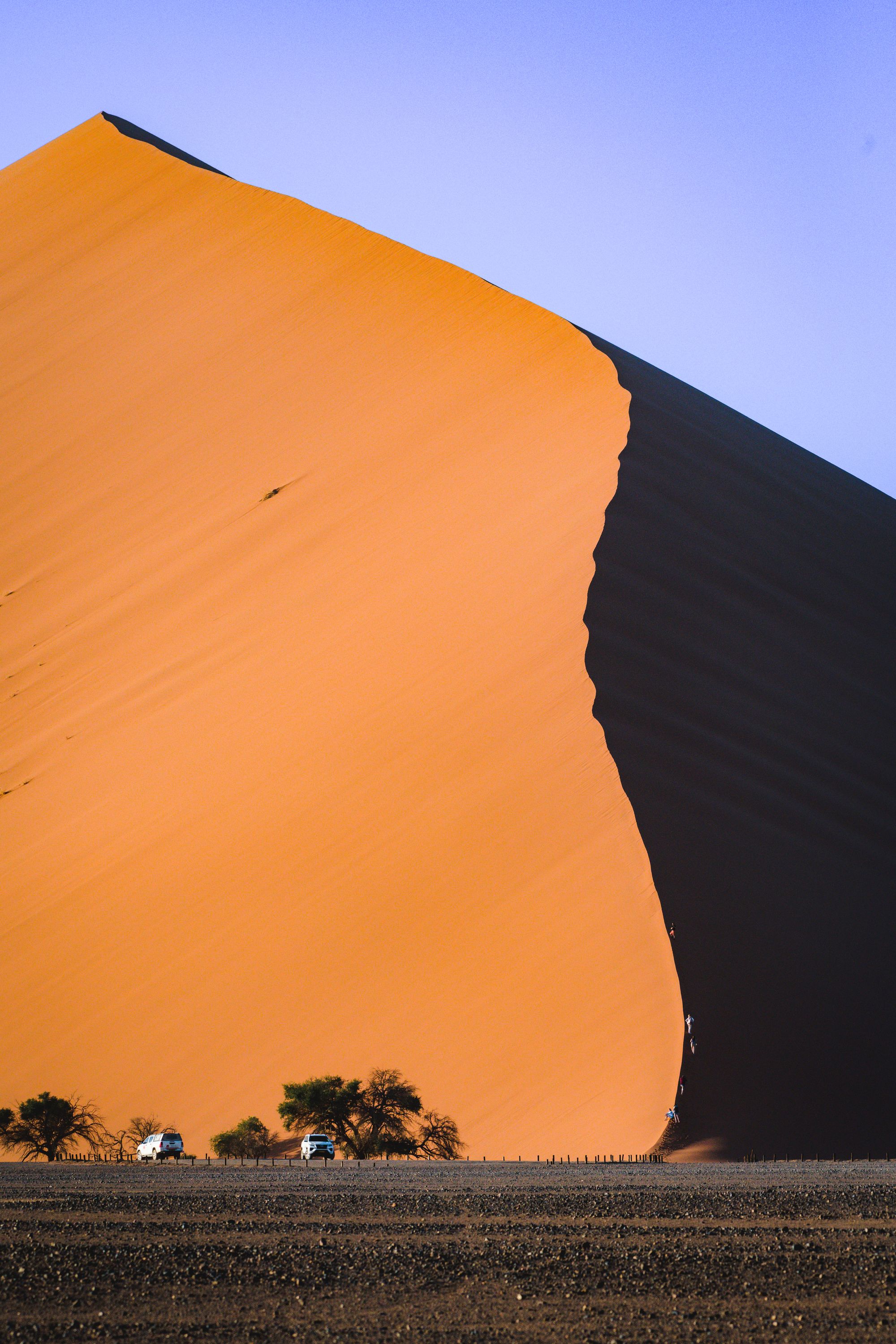
In the heart of the ancient Namib, where time stands still and the winds sing their eternal song, lay these treasures old as time itself. The Sossusvlei dunes, nestled between the rugged Skeleton Coast and the majestic Naukluft Mountains, are a symphony of sand and sky. For centuries, the wind has sculpted these dunes into graceful arcs of gold, each one a unique masterpiece rising from the desert floor to touch the crayon blue sky.
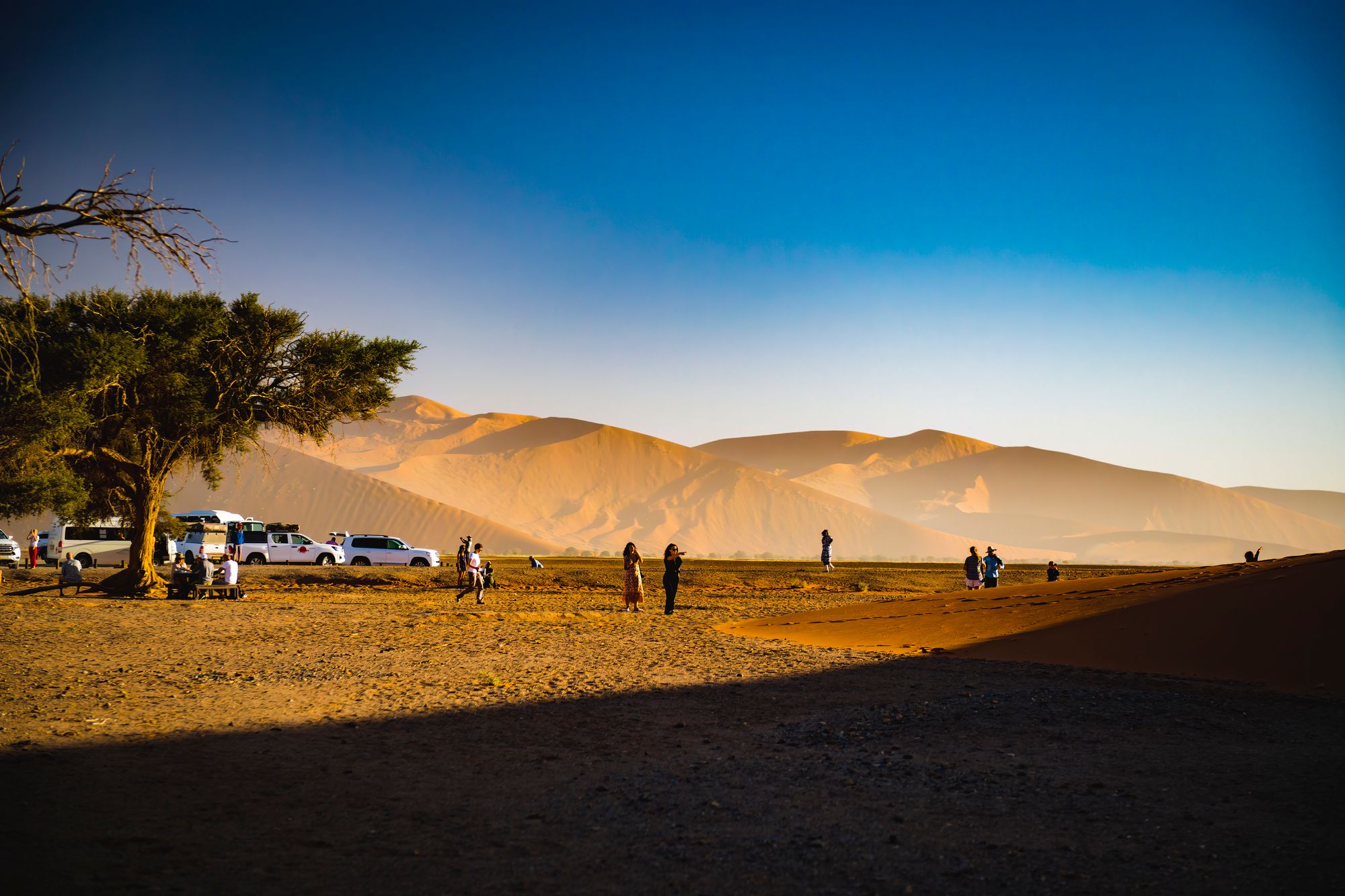
As you stand amidst these natural wonders, you can't help but feel as if you are in a dream. The dunes stretch on endlessly, a sea of sand that shimmers in the sun. The wind whispers secrets in your ear, and you can almost hear the dunes shifting and changing before your eyes. It is a world in motion, where the past and the present collide, and the future is etched in the sand.
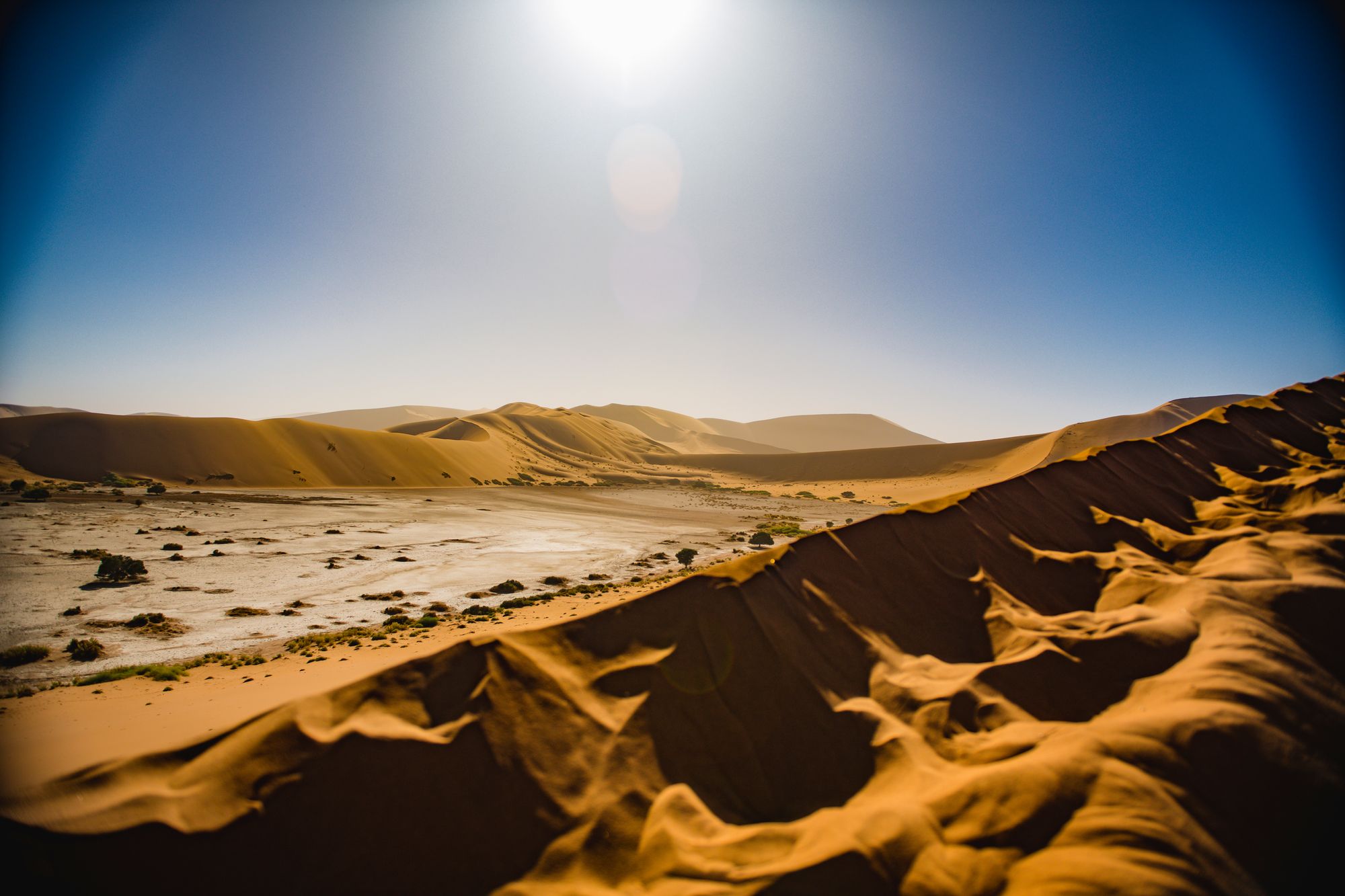
These are the dunes of our childhood dreams, the ones we imagined as we stared at computer screen wallpapers, the ones that have captured our hearts and souls when we drew the desert with color pencils. The Sossusvlei dunes are a reminder of the power and beauty of nature, and a testament to the enduring spirit of the Namib.
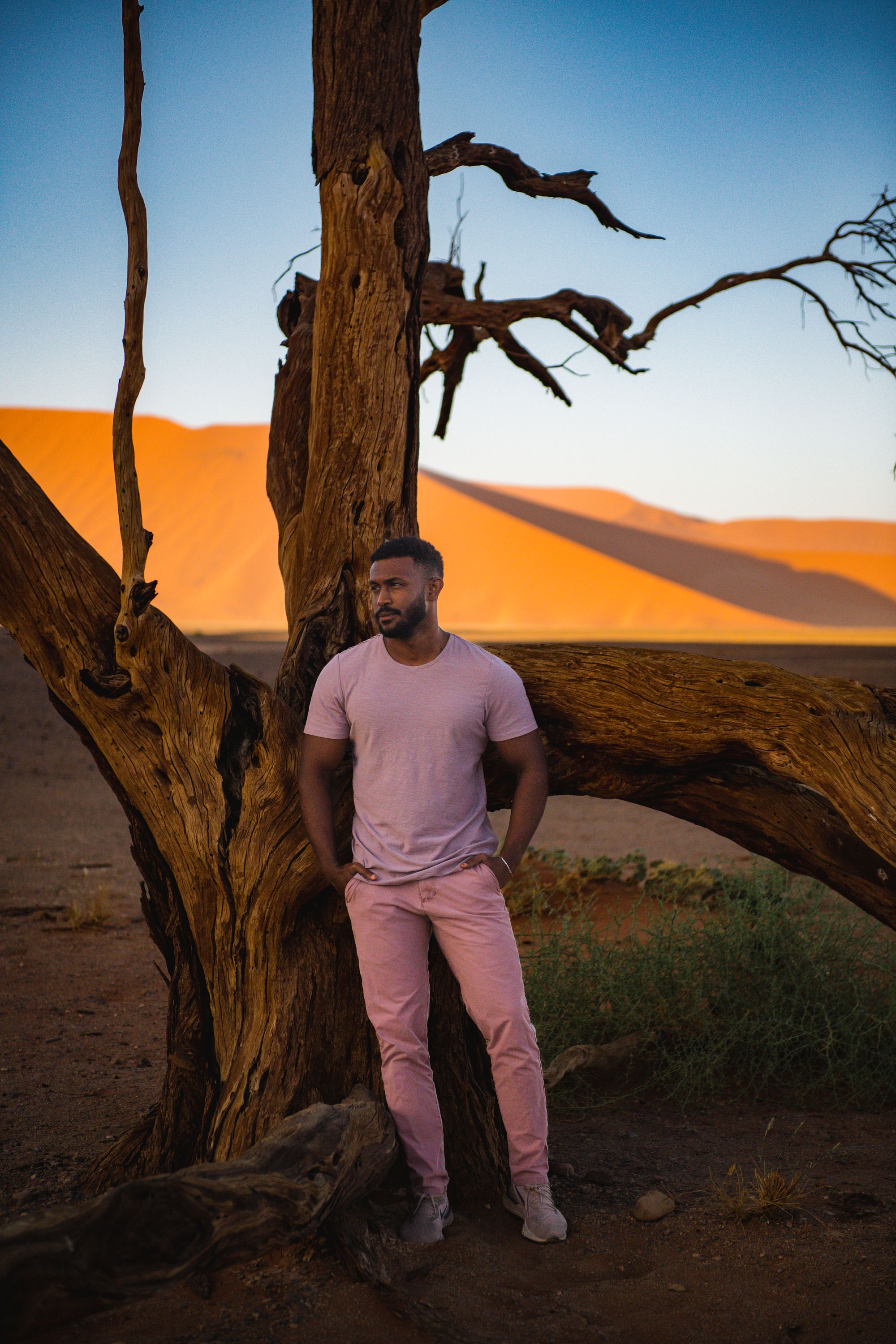
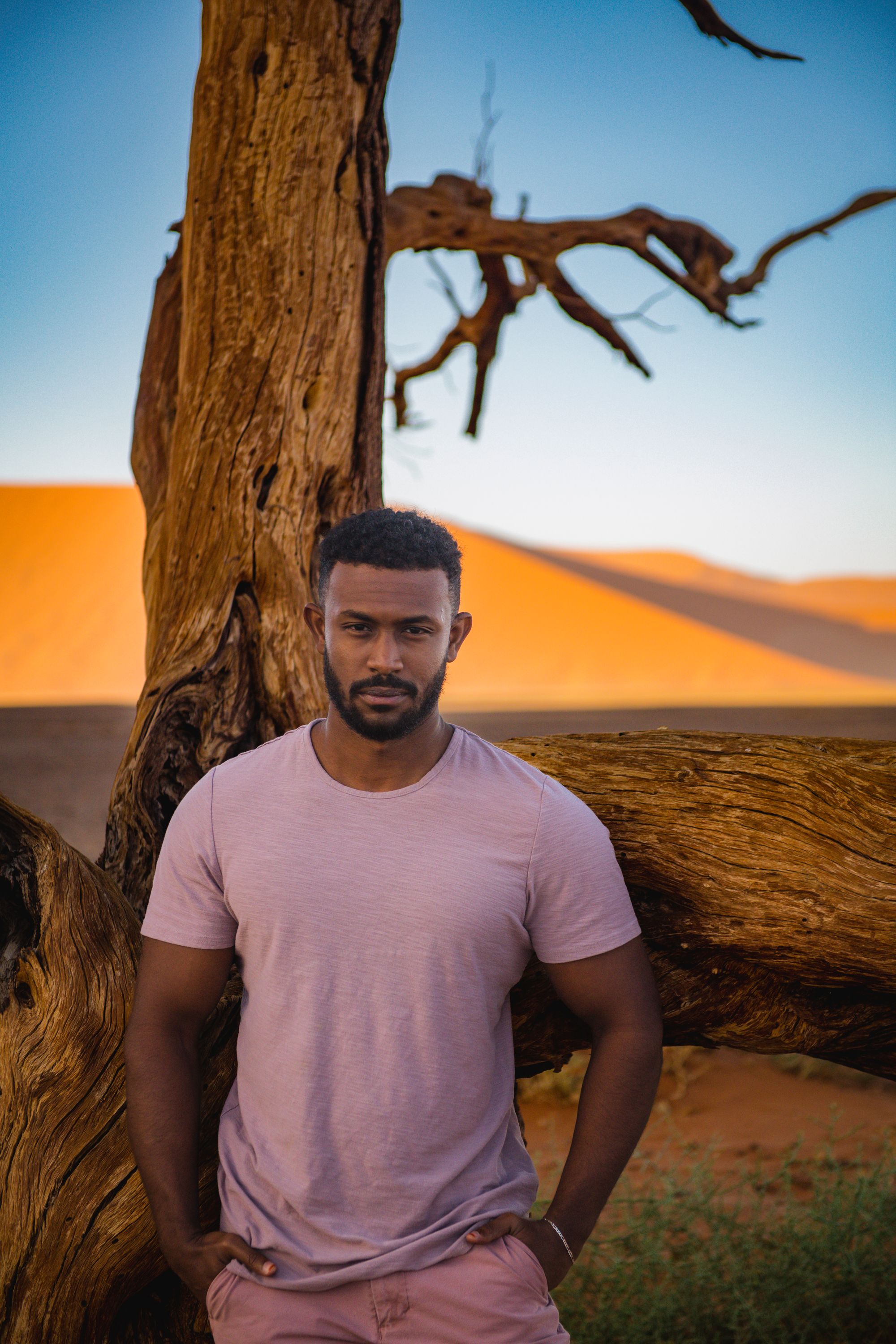
Our next stop was Deadvlei, the famous clay pan that provides an equally stunning and stark contrast to the bright orange dunes of Sossusvlei. The Tsauchab river formed the clay pans in this area after flooding, creating a haven for camel thorn trees. Drought later caused sand dunes to cover the pan, cutting off the river, forming the clay earth. The trees of the marsh dried up, and because it is too dry and hot for them to decay into the earth, they remain standing in the pan—black as the night sky in broad daylight, frozen in time for centuries.
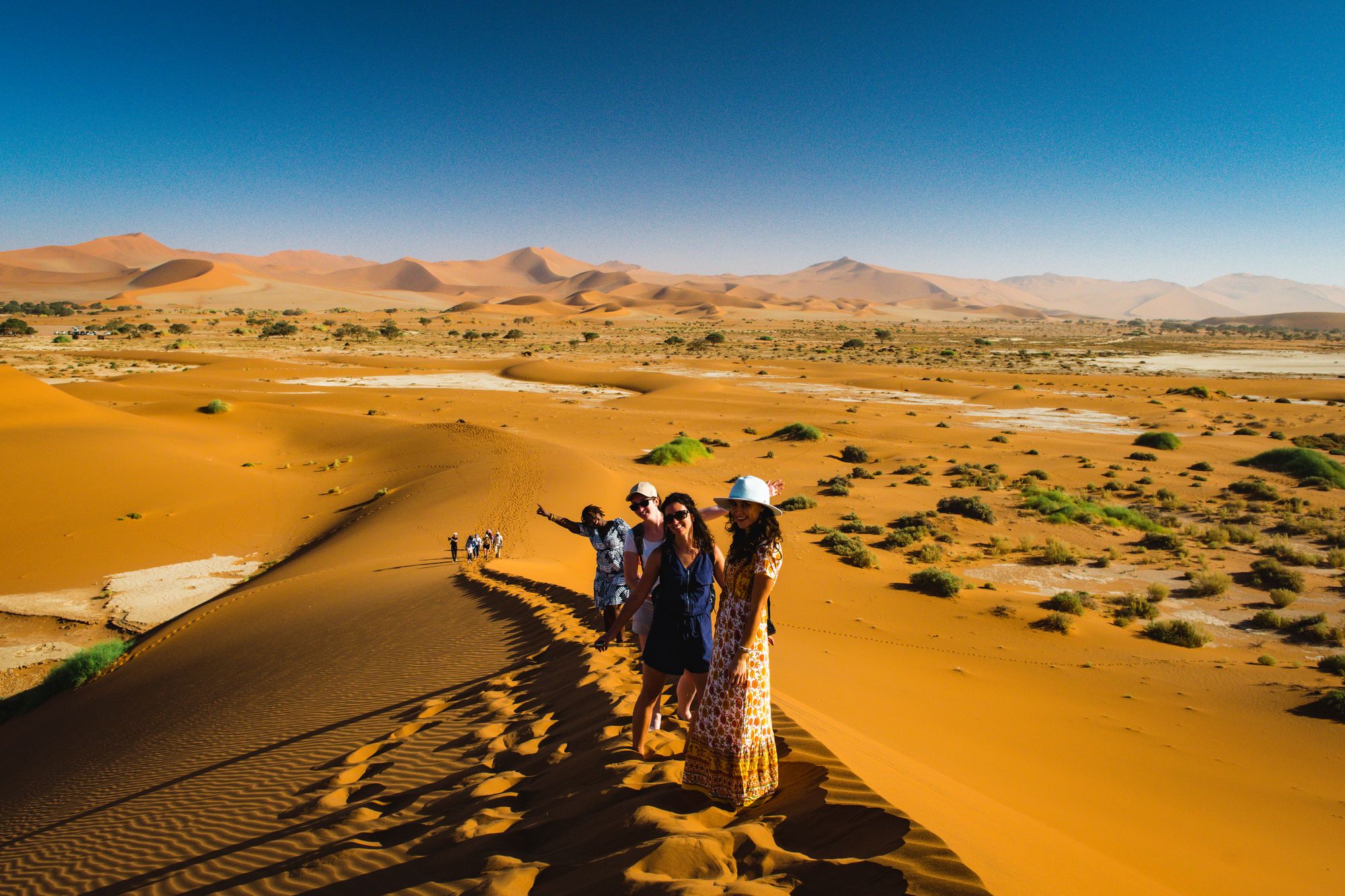
We hiked up a neighboring dune first to have a vantage of the surrounding area, before gracefully hopping down the hill into the clay pan.
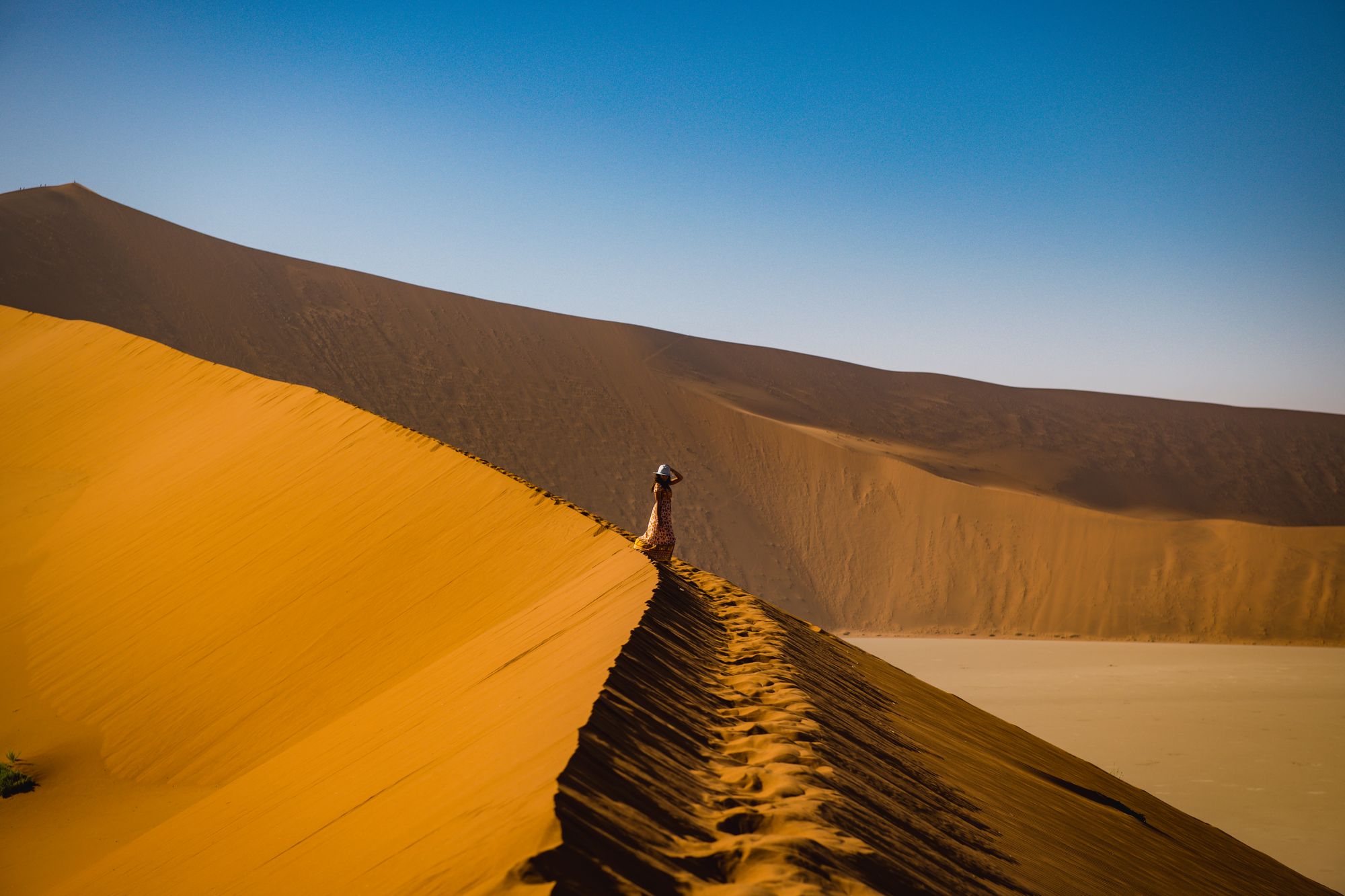
Be extremely careful with your electronic equipment. I brought a 200-500mm super telephoto lens for dramatic portraiture, and I have to admit that I was more than a little nervous each time I swapped lenses.
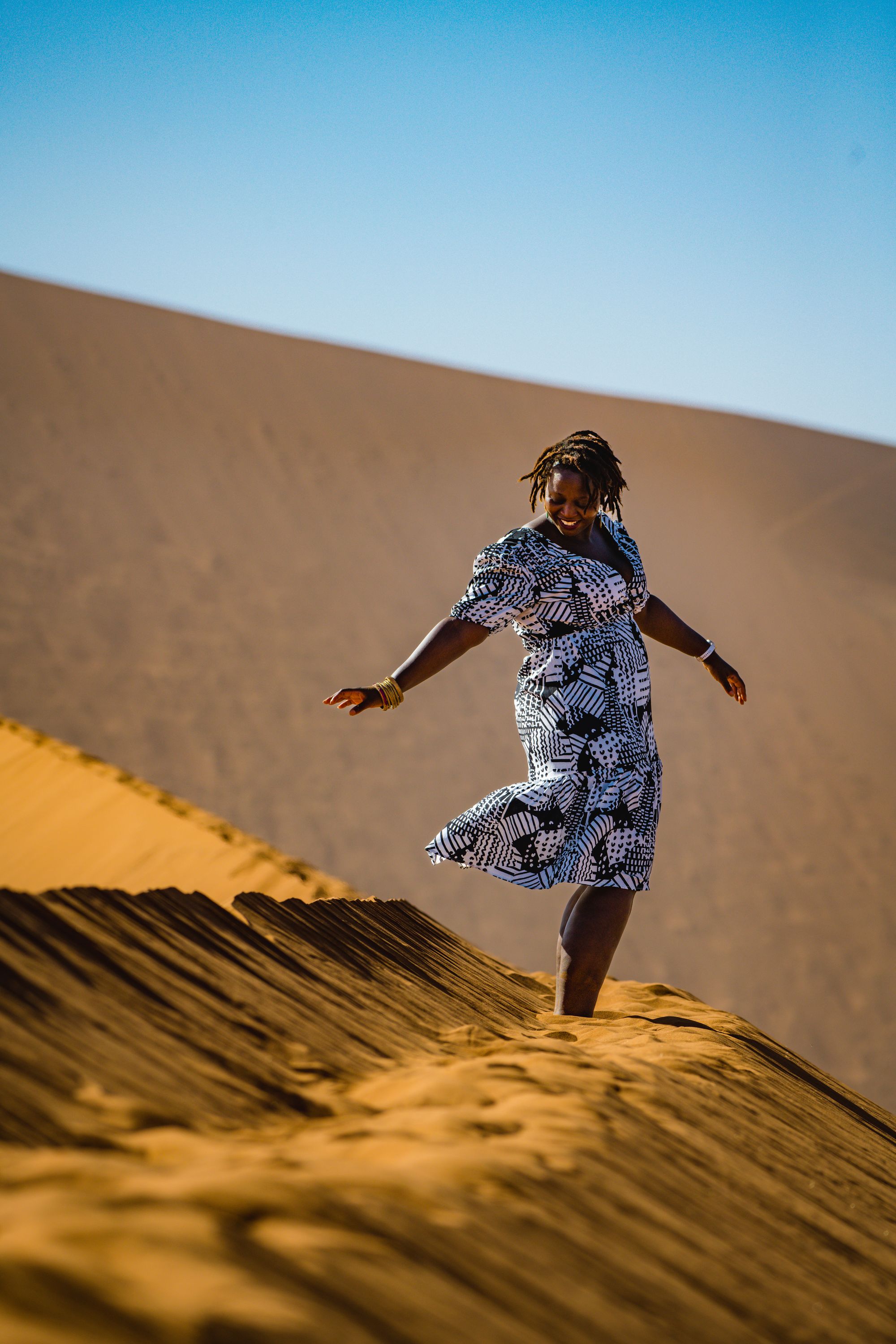
Photos usually showing Deadvlei seem to be overly edited, as far as I can tell—while the contrast is stark, the clay pan has an orange-red hue to it than the near-white like an online image search might lead you to believe.
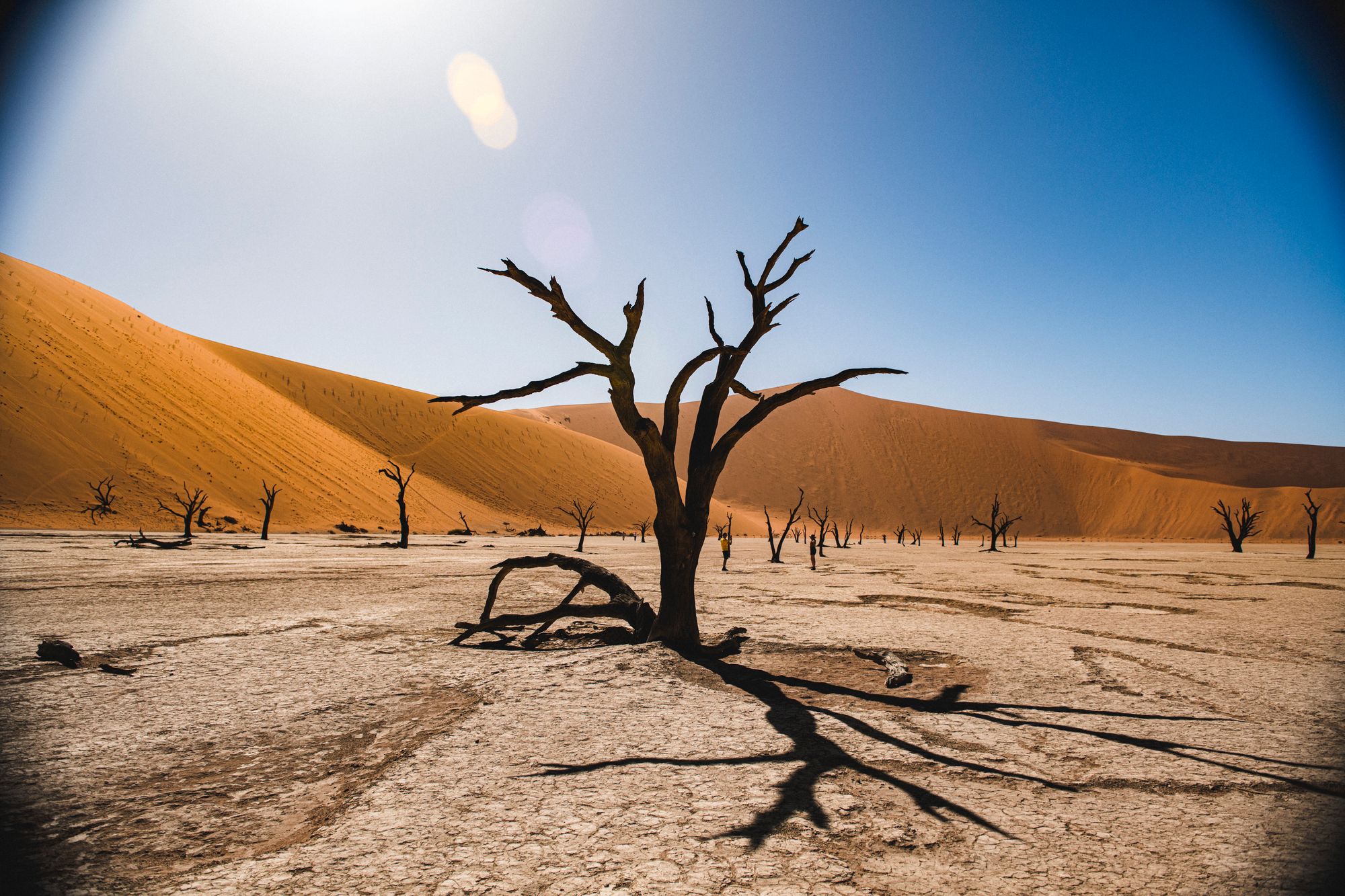
Wrapping up an extraordinary visit
Namibia is unlike anywhere I've ever visited. And, although I say this about a great many places I have spent time: I would like to go back.
The photographic opportunities are near endless, and I think it would be really lovely to explore more of the sand in the Winter season and at more dramatic times of the day and night. I can only imagine how incredible it would be to spend an evening under the stars in Sossusvlei, or Sandwich Harbour, and take night sky time-lapses of the stars. Even more fun would be to do what Sarah did, and road trip in a 4x4 vehicle from Cape Town, allowing more time to explore the areas that stood out to me with all the gear that I can fit into a vehicle.
If you have questions, or want advice on your Namibian trip planning, feel free to reach out.
- Windhoek: Avani Windhoek (www.avanihotels.com)
- Etosha: Taleni Etosha Village (www.etosha-village.com)
- Swakopmund: Hotel Pension A La Mer (www.pension-a-la-mer.com)
- Sesriem/Sossusvlei: Desert Camp (desertcamp.com)
